The First arrondissement is home to one of the most famous monuments in Paris: the Louvre. Mainly located on the Right bank of River Seine, it includes the Tuileries Garden, several historic churches and palaces, upscale squares and the bustling shopping precinct of Les Halles.
A few words about the 1st arrondissement
![1st arrondissement of Paris © ThePromenader - licence [CC BY-SA 3.0] from Wikimedia Commons](https://frenchmoments.eu/wp-content/uploads/2014/10/Paris_1er_arr_jms.gif)
The First arrondissement of Paris (le premier arrondissement) is situated on the right bank of River Seine and also includes the western end of the Île de la Cité.
It is one of the smallest arrondissements of Paris, covering an area of 1.83 km2 with a population of 15,917 (2019 census). The district is one of the most active for business as much of its area is dedicated to tourism, business and administration.
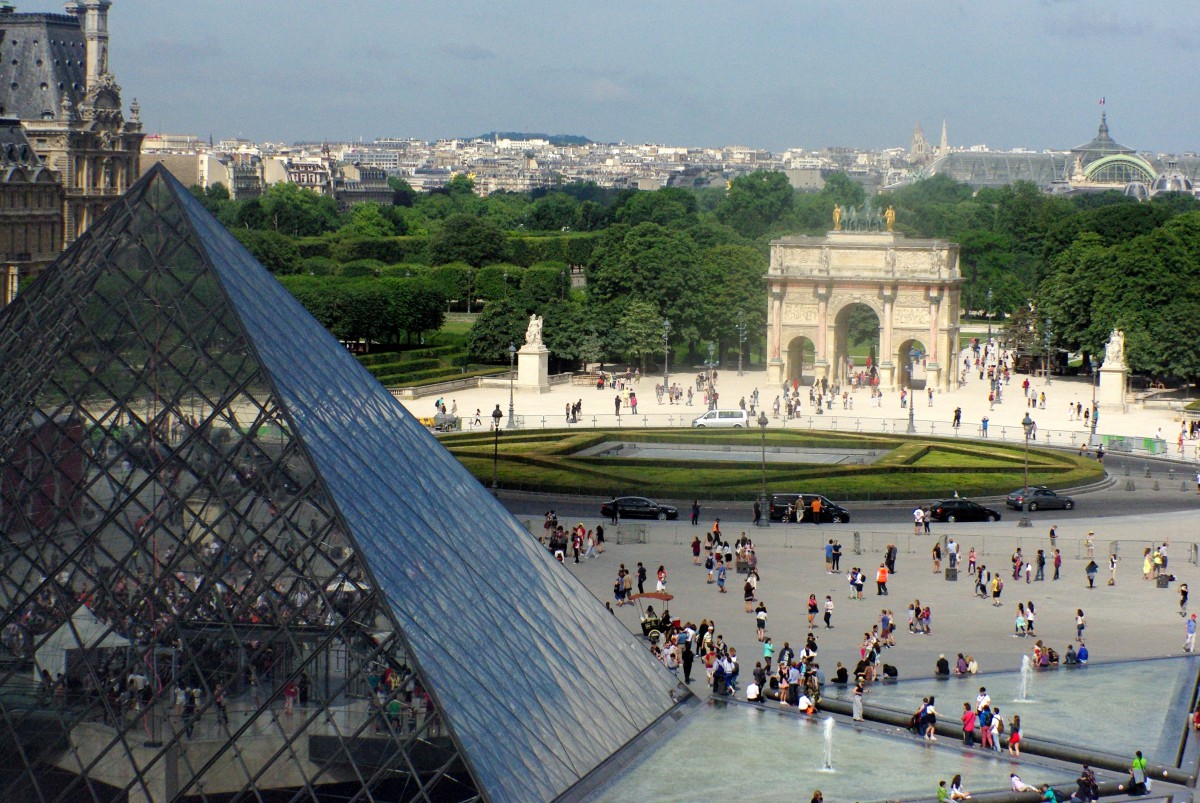
The 1st arrondissement is also one of the oldest in the French capital and was once the seat of royal power in Paris. The area contains many important landmarks such as the Louvre palace, the Conciergerie and the Sainte-Chapelle.
At the district’s centre is Les Halles, the former place for the large central wholesale marketplace, which was moved to Rungis in 1971 and replaced with the Forum des Halles, a modern and underground Westfield shopping mall.
The four districts of the 1st arrondissement
The 1st arrondissement is composed of four districts:
![Four districts of the First arrondissement of Paris © Paris 16 - licence [CC BY-SA 4.0] from Wikimedia Commons](https://frenchmoments.eu/wp-content/uploads/2014/10/Quartiers-1er-arrondissement-Paris-©-Paris-16-licence-CC-BY-SA-4.0-from-Wikimedia-Commons.jpg)
- The district of Saint-Germain-l’Auxerrois is that of the Louvre and the Tuileries. Here, the arts flourish thanks to the presence of several renowned museums, including the Louvre and the Orangerie. It is a district where justice reigned in the Middle Ages and up to our time. Indeed, the Palais de Justice encircles the fabulous Sainte-Chapelle on the Ile de la Cité.
- The district of Les Halles is animated by leisure and commerce. At the foot of Saint-Eustache, the Halles garden covers the Forum des Halles, a vast shopping mall buried on several levels. The garden faces the Bourse du Commerce.
- The district of the Palais-Royal is rich in contrast. It concentrates on activities related to tourism, culture and literature. The Avenue de l’Opéra is lined with travel agencies and hotels. The Comédie française, theatres and the Ministry of Culture frame the gardens of the Palais-Royal. The memory of writers and artists floats in the maze of neighbouring streets.
- The luxury industry and French savoir-vivre characterise the Vendôme district. Jewellers occupy the Place Vendôme and antique dealers line the Rue Saint-Honoré. On the neo-classical square of Place Vendôme, around the Ritz, haute couture and leather goods present the jewels of French design.
Where to stay in the 1st arrondissement?
Hotels in Paris vary from stunning luxurious places like the Ritz and the Meurice to much simpler hotels in charming older parts of the city. However, due to its central location, you will find the level of prices of all types of accommodation relatively high in the 1st arrondissement. Depending on your budget, you might want to find cheaper accommodation further away from the hyper centre of Paris!
The district has more than 70 hotels totalling over 4,000 rooms. Of these, eleven are 5-star hotels, including some of the most famous:
- the Hôtel Meurice
- the Hôtel du Louvre
- the Ritz (Place Vendôme)
- the Hôtel Costes
- the Grand Hôtel du Palais Royal
- the Hôtel Régina
Here is a map showing the nearest accommodation:
Public institutions in the 1st arrondissement
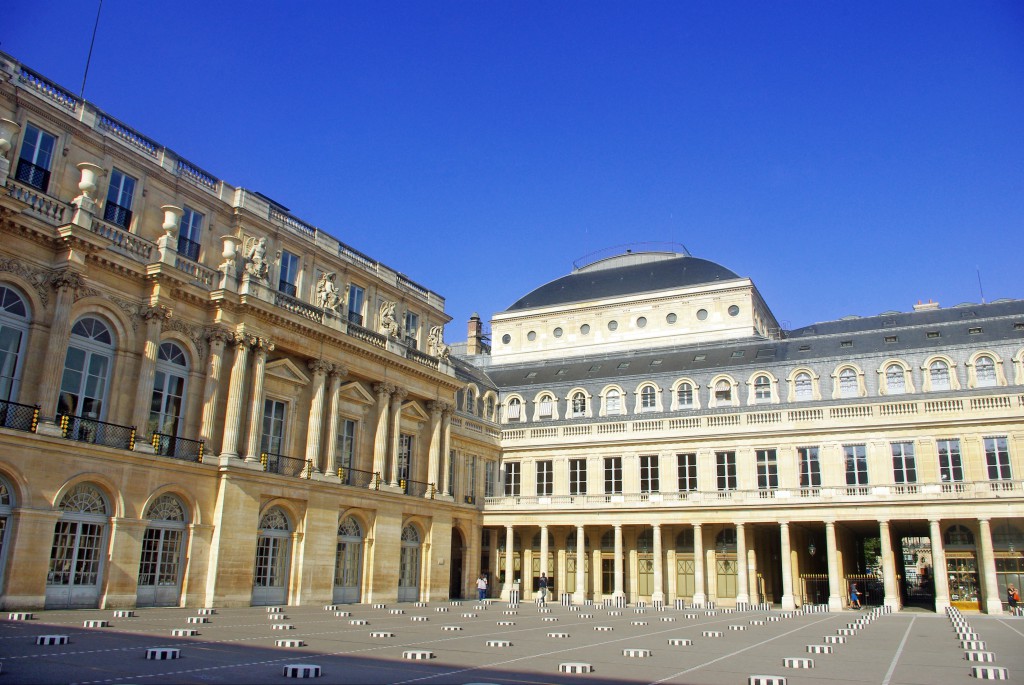
Many public institutions have their seat in the 1st arrt:
- the Conseil Constitutionnel (Constitutional Council)
- the Conseil d’État (Council of State)
- the Cour des Comptes (Court of Audit)
- the Ministère de la Justice (Ministry of Justice)
- the Palais de la Justice (Courthouse)
- the Banque de France (France’s central bank)
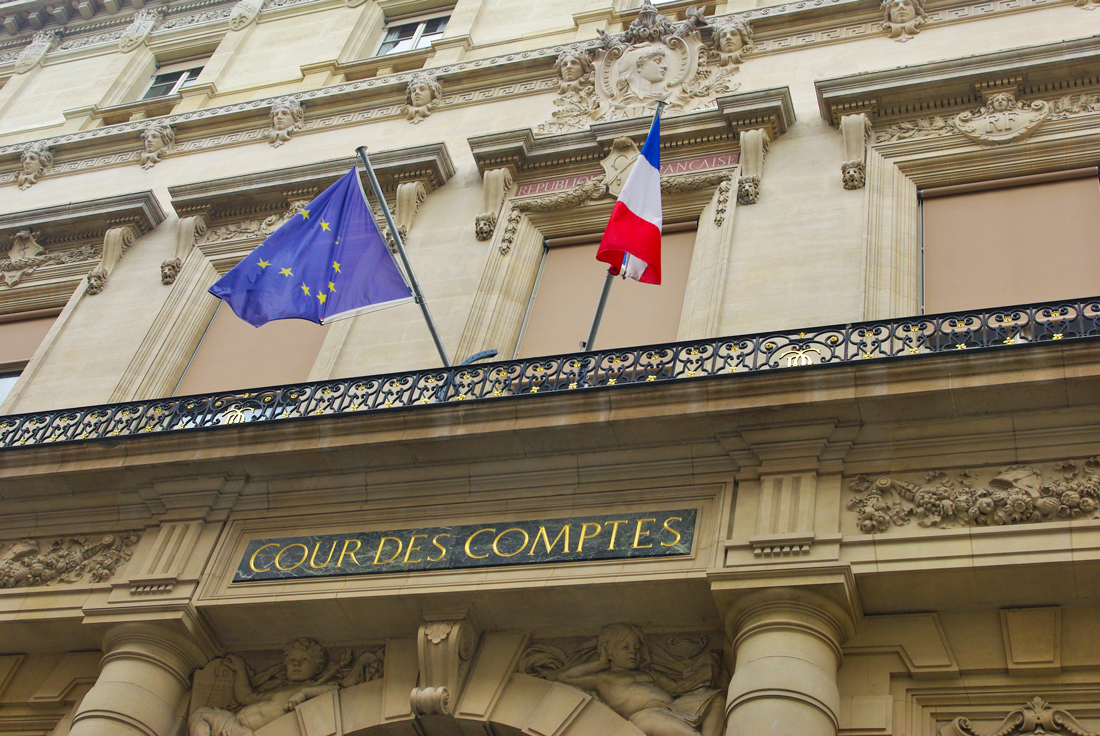
Shopping in the 1st arrondissement
The first arrondissement is one of the commercial hotspots of Paris, with a plethora of stores and boutiques thanks to the presence of Les Halles and the busy Rue de Rivoli.
The shopping arteries of the district are :
- the streets around Les Halles (rue Saint-Denis, rue Pierre Lescot, rue Rambuteau, rue Berger…)
- the Rue de Rivoli is a major shopping street in Paris, most notably between the Louvre and beyond the limits of the 4th arrondissement (then rue Saint-Antoine towards Place de la Bastille).
- the Rue Montorgueil is home to delis and some of the best pâtisseries in the city, meat and fish markets, boutiques, cosy cafés and bars.
- the Rue Saint-Honoré is home to antiquaries and exclusive boutiques.
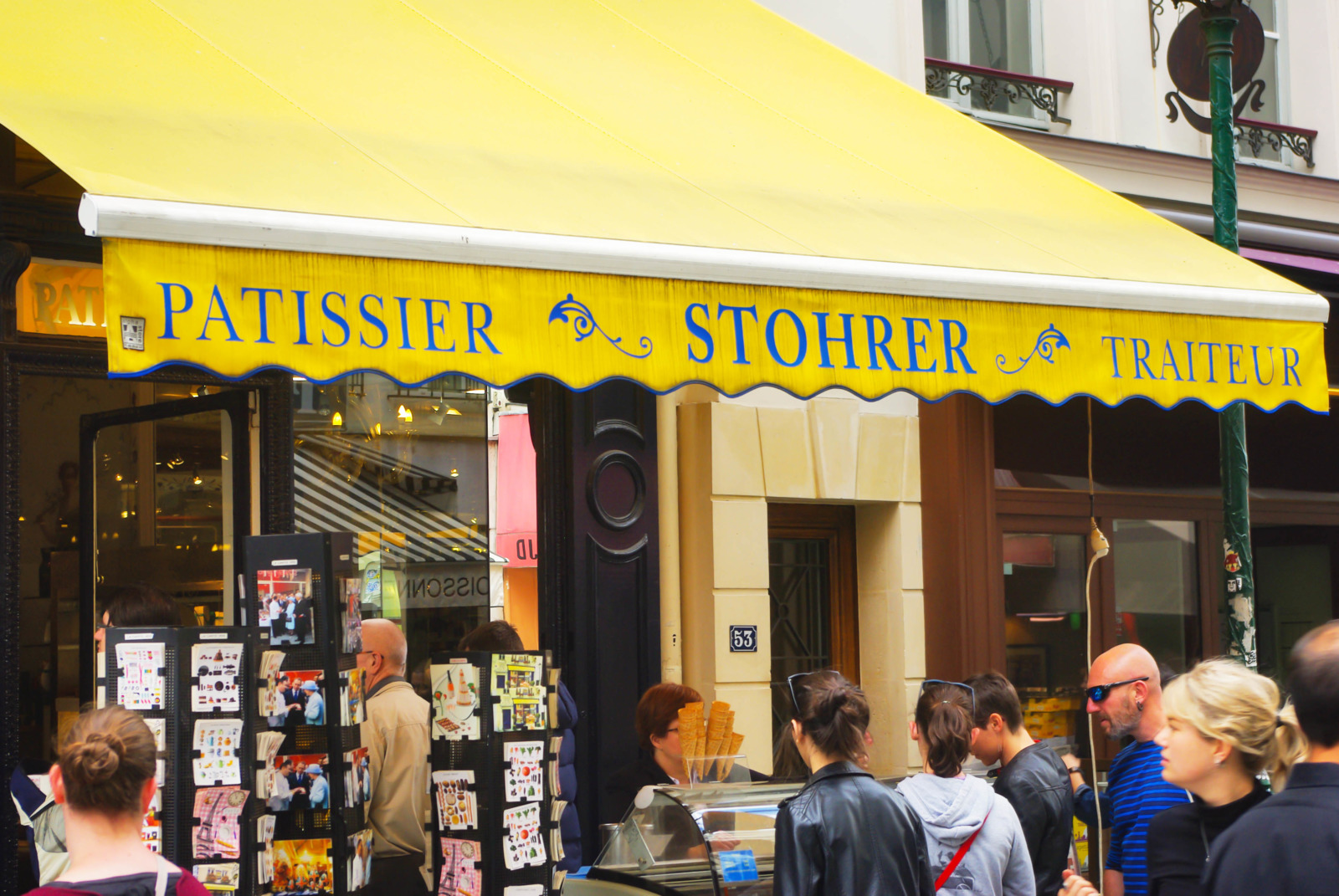
Furthermore, the district is home to two open-air food markets:
- Marché Saint-Eustache, Rue Montmartre
- Marché Saint-Honoré, Place du Marché-Saint-Honoré
In addition, it boasts a few bookshops, including Librairie Delamain (the oldest bookshop in Paris at number 155 rue Saint-Honoré), Librairie Galignani and the British bookshop WH Smith (Rue de Rivoli). Lastly, you will find the FNAC (one of France’s premier bookshops) in the Westfield Forum des Halles.
Main places of interest
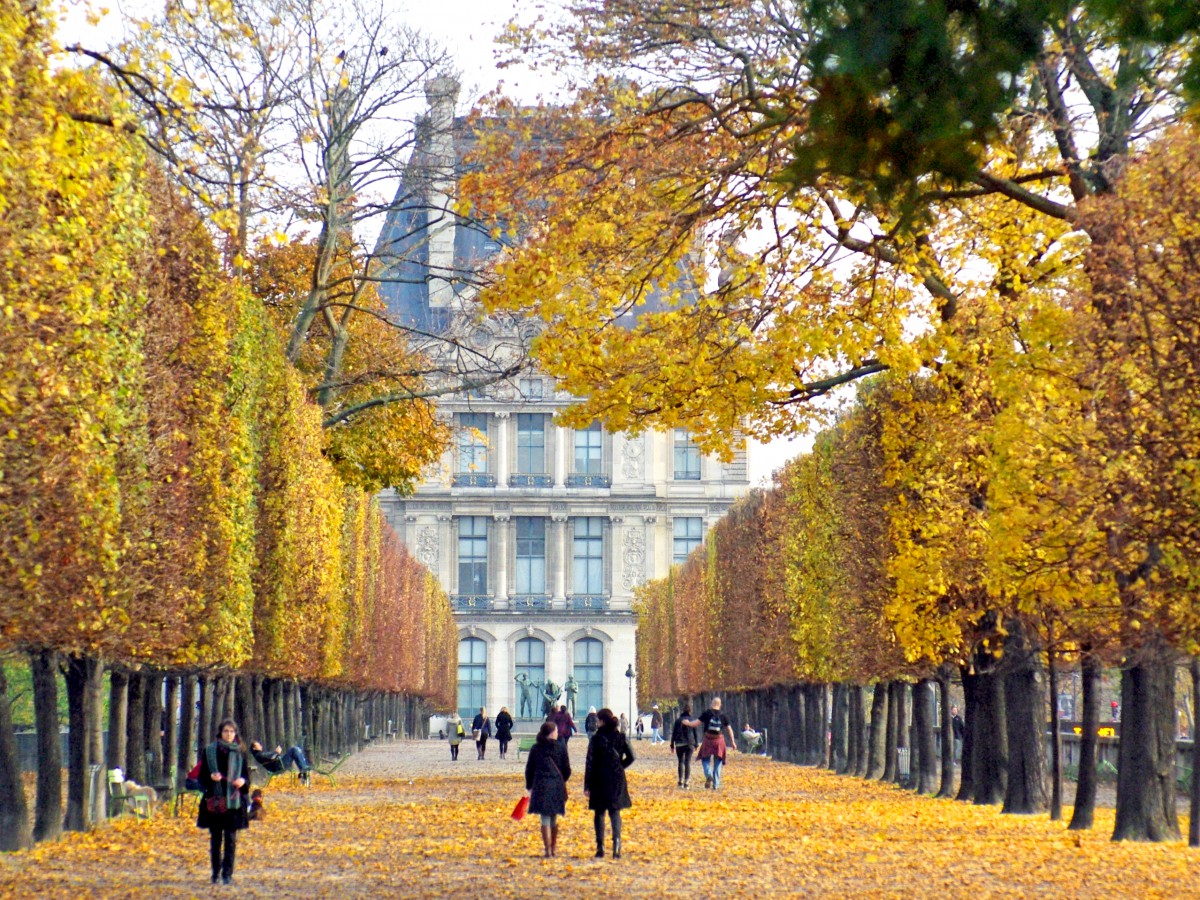
The 1st arrondissement includes some of Paris’ premier monuments and sites. The Historical Axis (Voie Triomphale) starts from the Cour Napoléon in the Louvre and crosses the Tuileries garden on its way to the Arc de Triomphe and La Défense.
Churches in the 1st arrondissement
The 1st arrondissement includes some of Paris’ most famous churches:
Church of Saint-Eustache
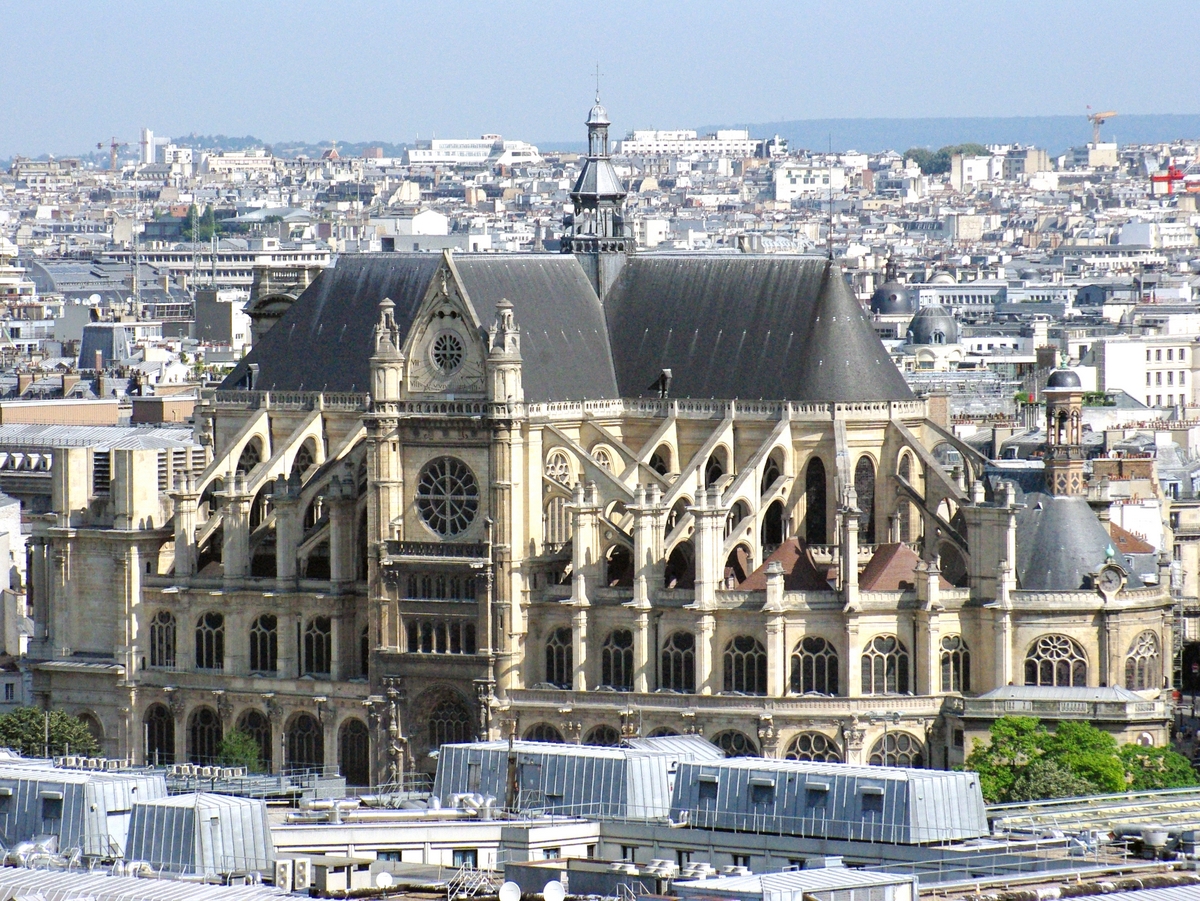
In the heart of the Halles district, the Catholic parish church of Saint-Eustache is one of Paris’ most prominent churches, and it took a century to build (between 1532 and 1633). The church was designed in a Gothic style in the middle of the Renaissance and has a harmonious architectural character. The church shows the features of Gothic (the elevation of the nave) and the Renaissance (ornaments). These characteristics give the building a unique character.
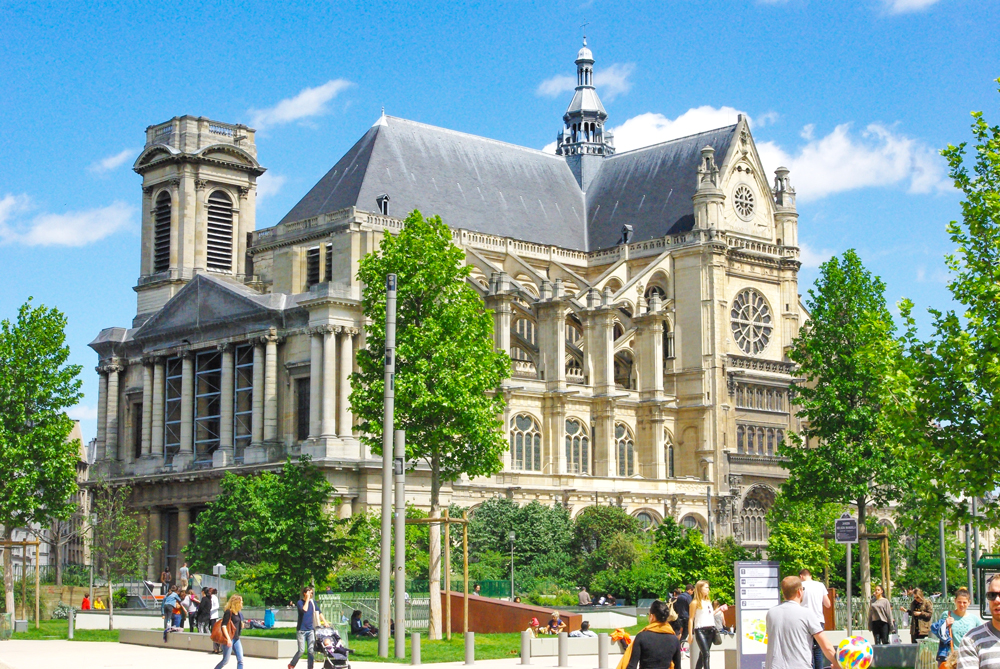
Church of Saint-Germain-l’Auxerrois
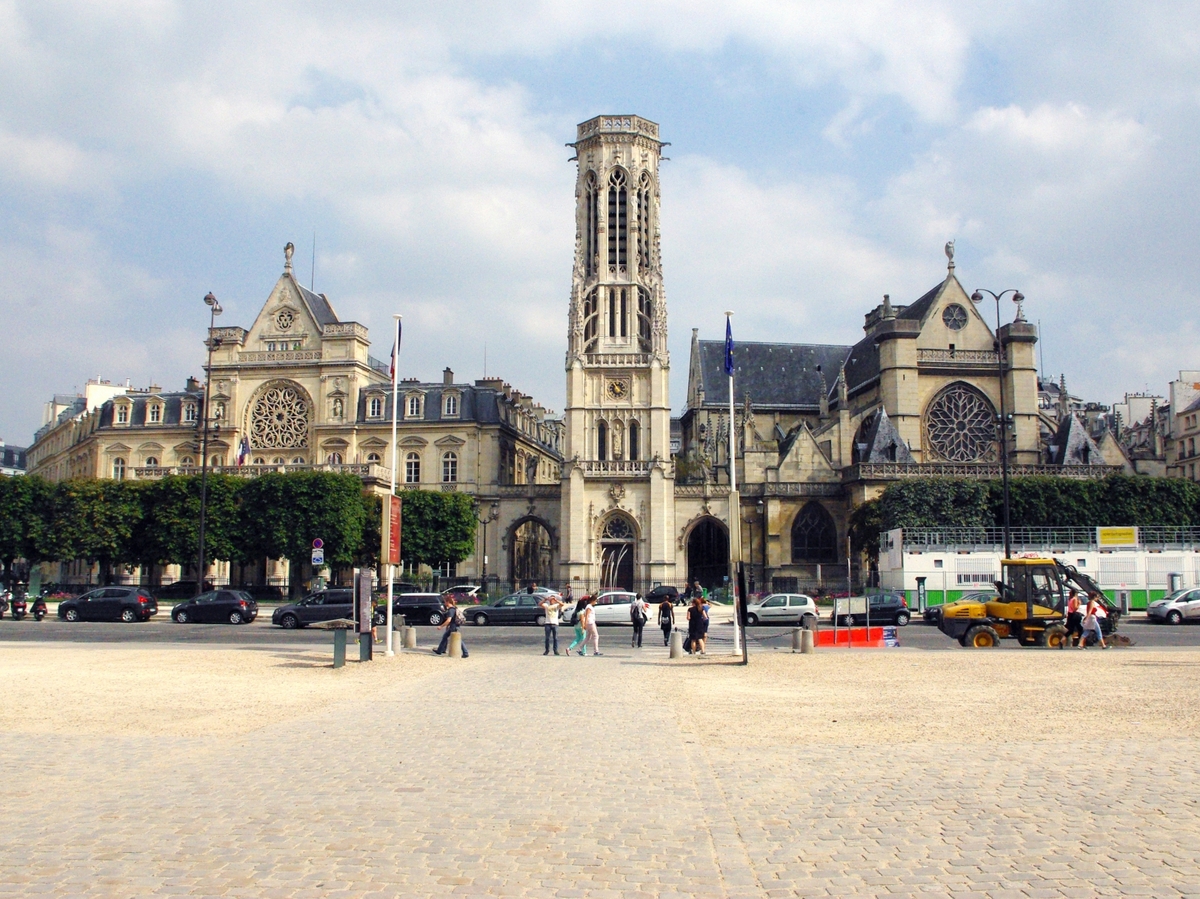
The church of Saint-Germain-l’Auxerrois is opposite the Louvre’s colonnade, near the town hall of the 1st arrondissement.
Its parish dates from the late 11th century and is among the oldest in the city, along with Saint-Gervais. The sanctuary is also one of the oldest buildings in Paris.
Moreover, Saint-Germain-l’Auxerrois became the official church of the royal family when the Valois moved back to the Louvre in the 14th century. In the 15th century, the church was mostly rebuilt (nave and transept, as well as the western porch).
Saint-Germain-l’Auxerrois Takes its name from the Auxerre’s bishop Saint Germain.
Sainte-Chapelle
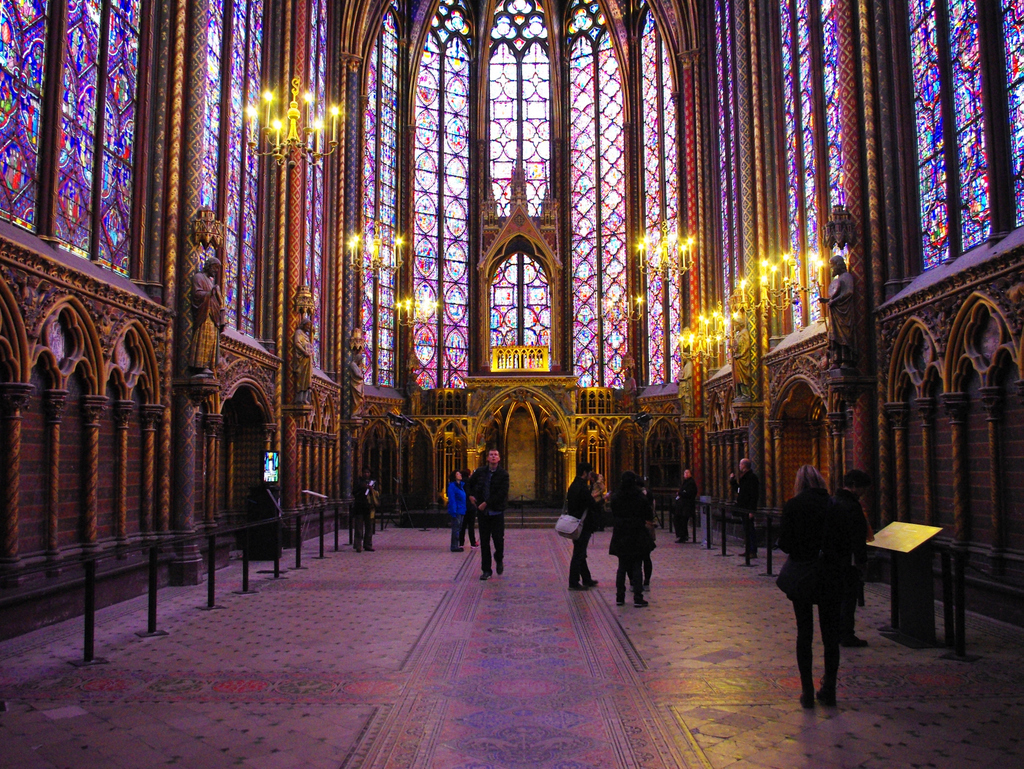
The Sainte-Chapelle is an emblematic building of the Rayonnant Gothic style on the Ile de la Cité. Saint Louis wanted it built to house the Holy Crown of Thorns, a piece of the True Cross, and various other Passion relics that the French king had acquired from 1239 onwards.
Church of Saint-Leu-Saint-Gilles
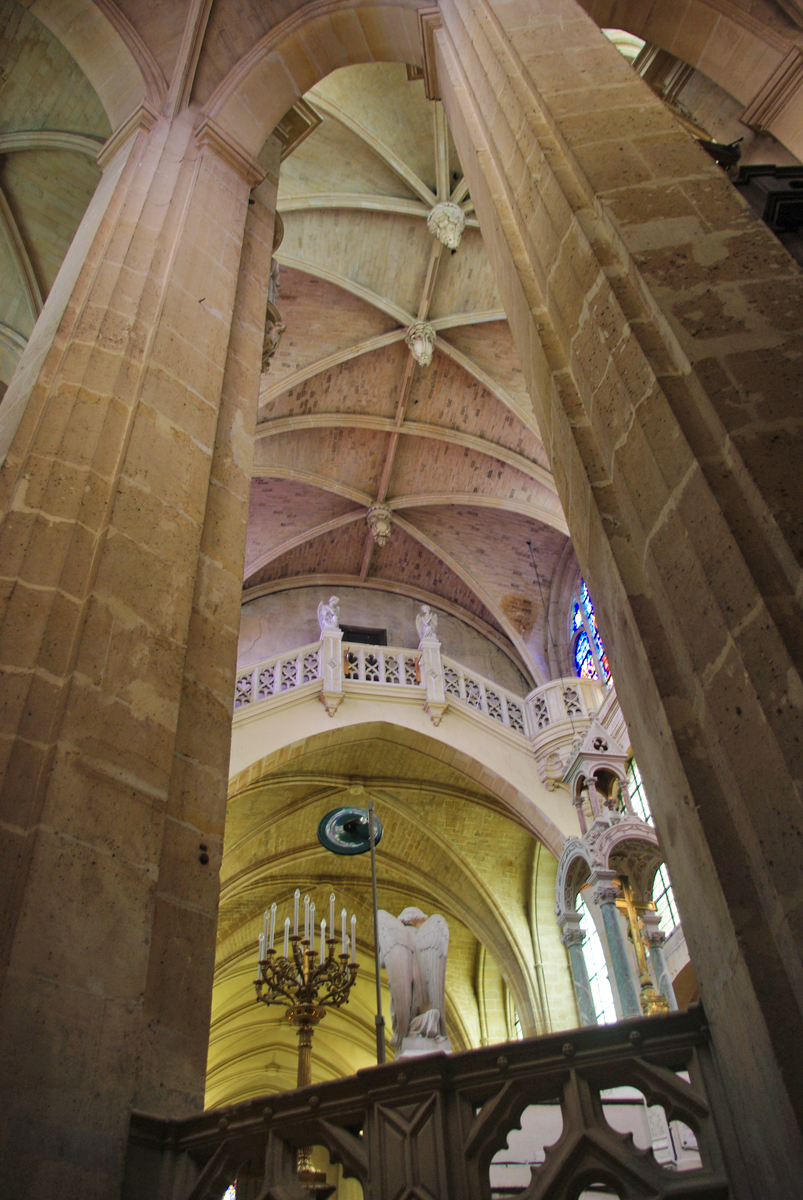
The Saint-Leu-Saint-Gilles church is a 13th-century Catholic church located on the rue Saint-Denis. The main façade of the Gothic-style church has two characteristic turrets. Its relatively modest interior has numerous stained glass windows.
Church of Saint-Roch
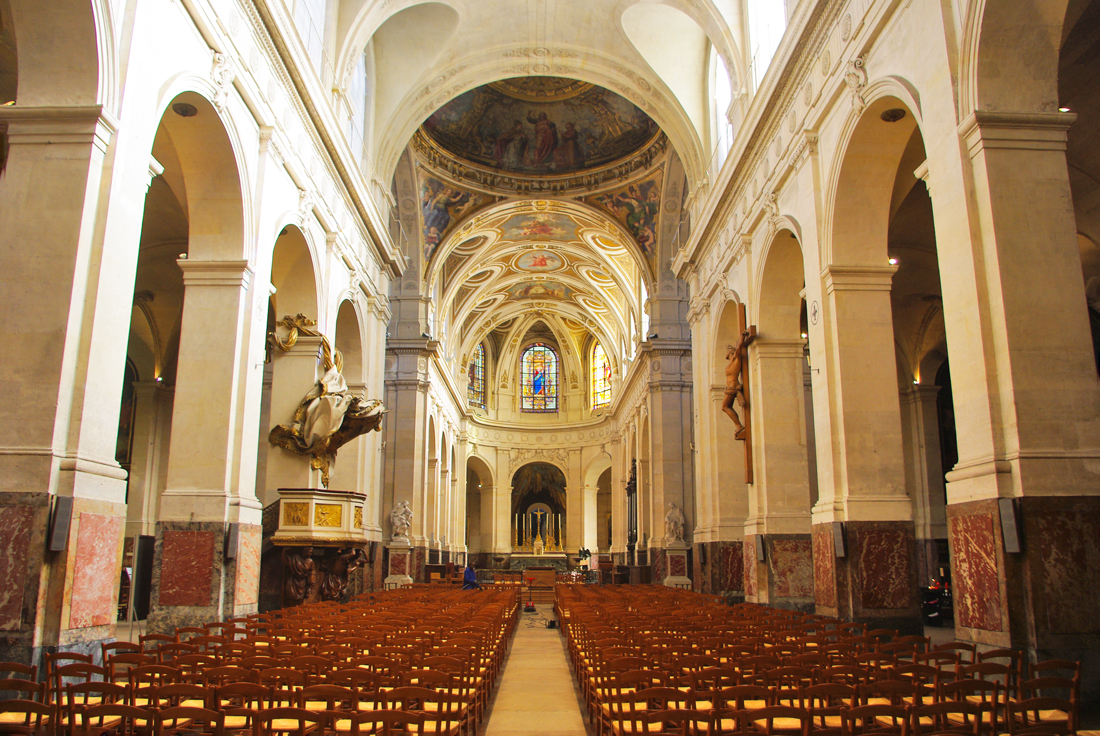
The church of Saint-Roch, located in the rue Saint-Honoré, was built between 1653 and 1722 according to the initial plans of Jacques Le Mercier. This church is essentially Baroque in style and is 126 metres long, making it one of the largest in Paris.
The sanctuary has a series of chapels or architectural elements worth discovering from north to south.
Church of Notre-Dame de l’Assomption
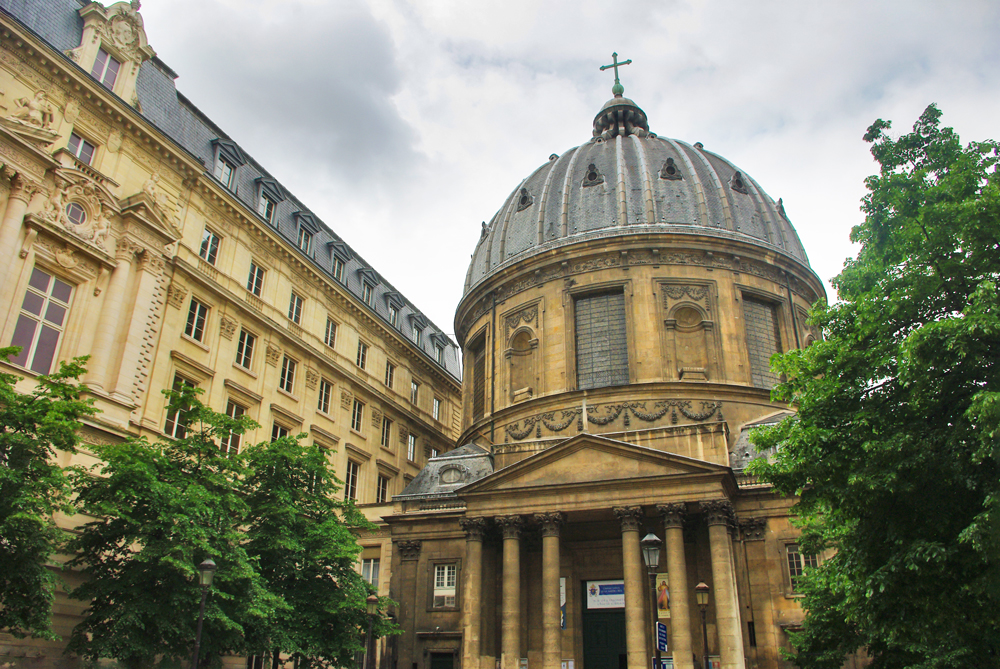
The church of Notre-Dame-de-l’Assomption is a Polish Catholic place of worship located on Place Maurice-Barrès, at the corner of Rue Saint-Honoré and Rue Cambon. The church and its dome (1670-1676) feature the neo-classical style.
Oratoire du Louvre
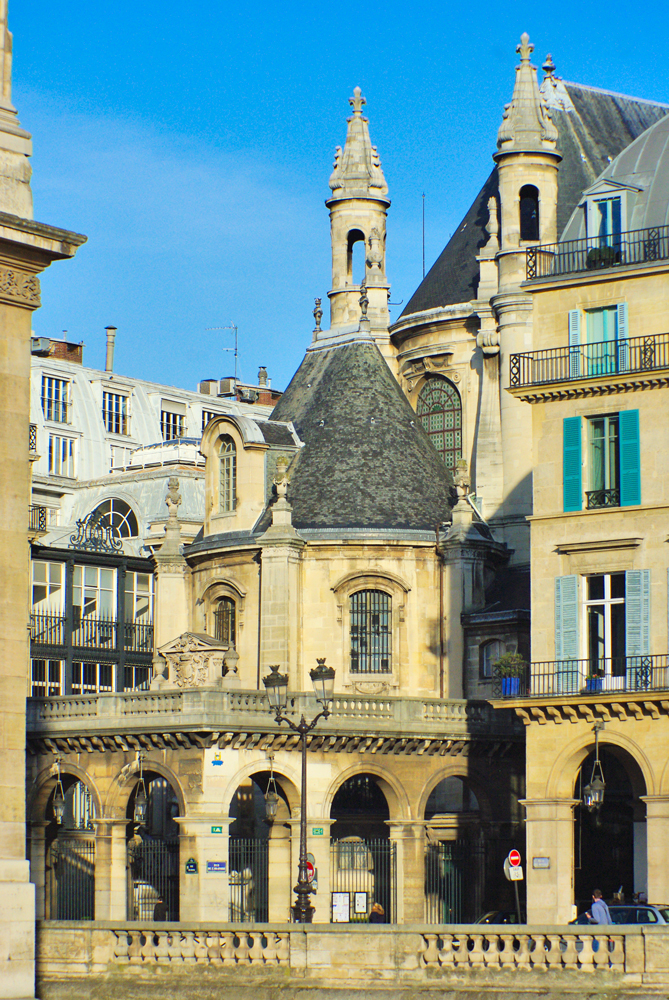
It is a former Catholic church, the seat of the Congregation of the Oratory of France, raised by Louis XIII as the royal chapel of the Louvre Palace in 1624. Disused during the French Revolution, the building became the headquarters of the Reformed Consistory of Paris in 1811 under Napoleon I.
Museums in the 1st arrondissement
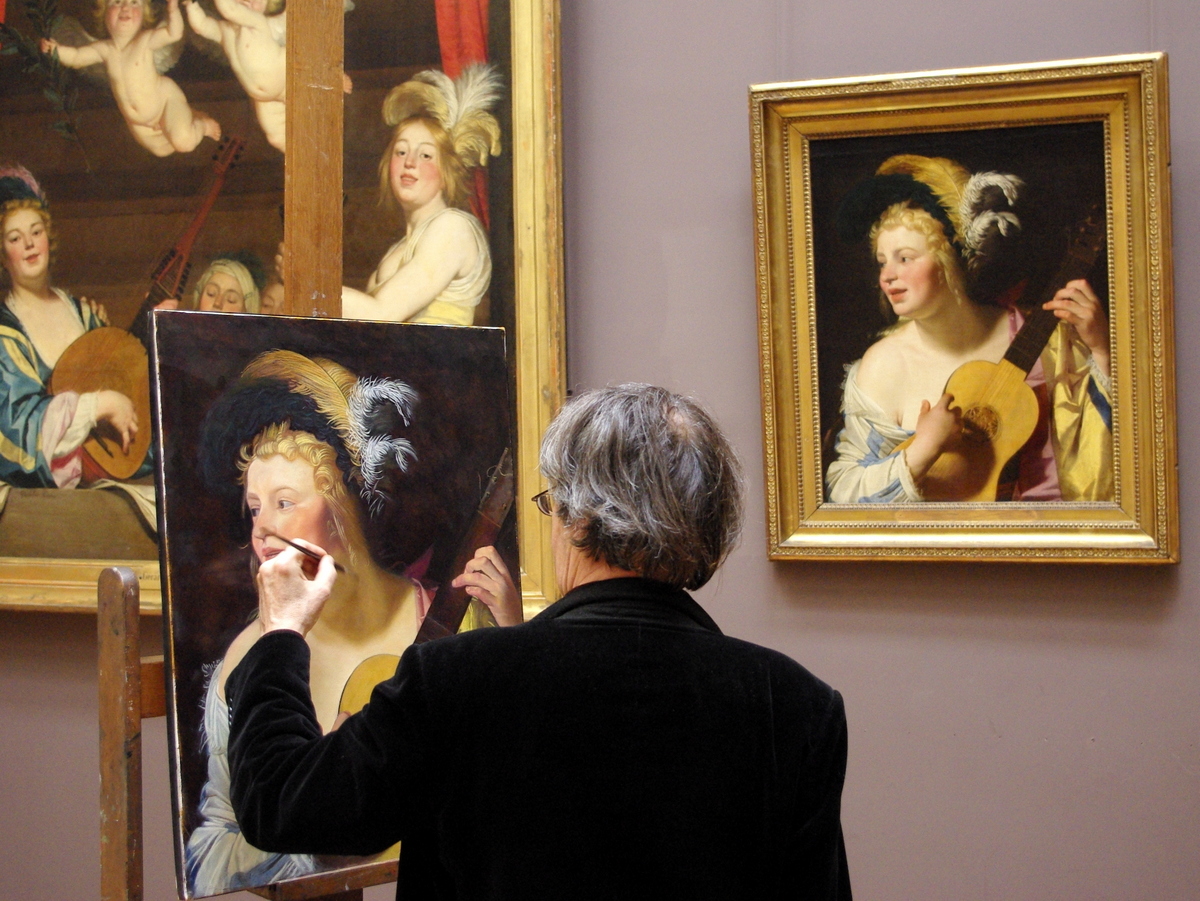
The 1st arrondissement includes museums and art galleries which rank among Paris’ most significant cultural landmarks:
- Musée du Louvre (the most visited museum in the world exhibiting the Mona Lisa, the Venus de Milo, and the Victory of Samothrace) Book your guided visit in English of the Louvre museum’s highlights
- Musée de l’Orangerie (an art gallery of impressionist and post-impressionist paintings located in the west corner of the Tuileries Gardens) Get your eTickets
- Galerie Nationale du Jeu de Paume (an arts centre for modern and postmodern photography and media)
- Musée des arts décoratifs de Paris (the Museum of Decorative Arts is dedicated to the exhibition and preservation of the decorative arts).
- Musée en Herbe (an art museum for children, located at 23 rue de L’Arbre-Sec)
- Fondation Pinault (the Bourse du Commerce has housed the Pinault Collection since May 2021)
- Fondation Cartier (the Fondation Cartier pour l’art contemporain is a private institution entirely dedicated to contemporary art that will move into the Louvre des Antiquaires by 2024)
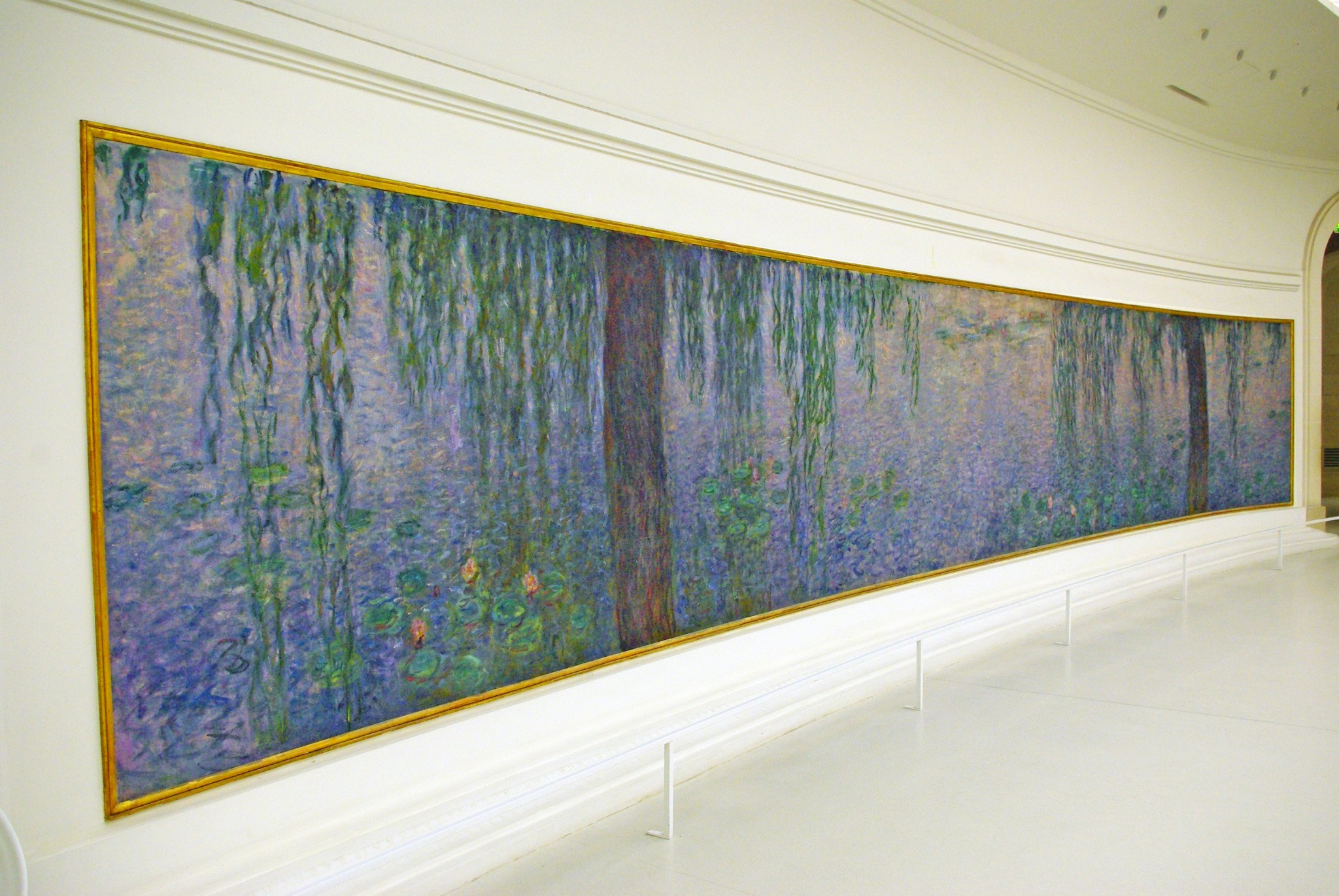

Parks and Gardens
Thanks to the Tuileries gardens, the First arrondissement has the largest surface area of public green spaces (excluding the two woods of Boulogne and Vincennes), totalling 46 hectares out of the 270 hectares in Paris.
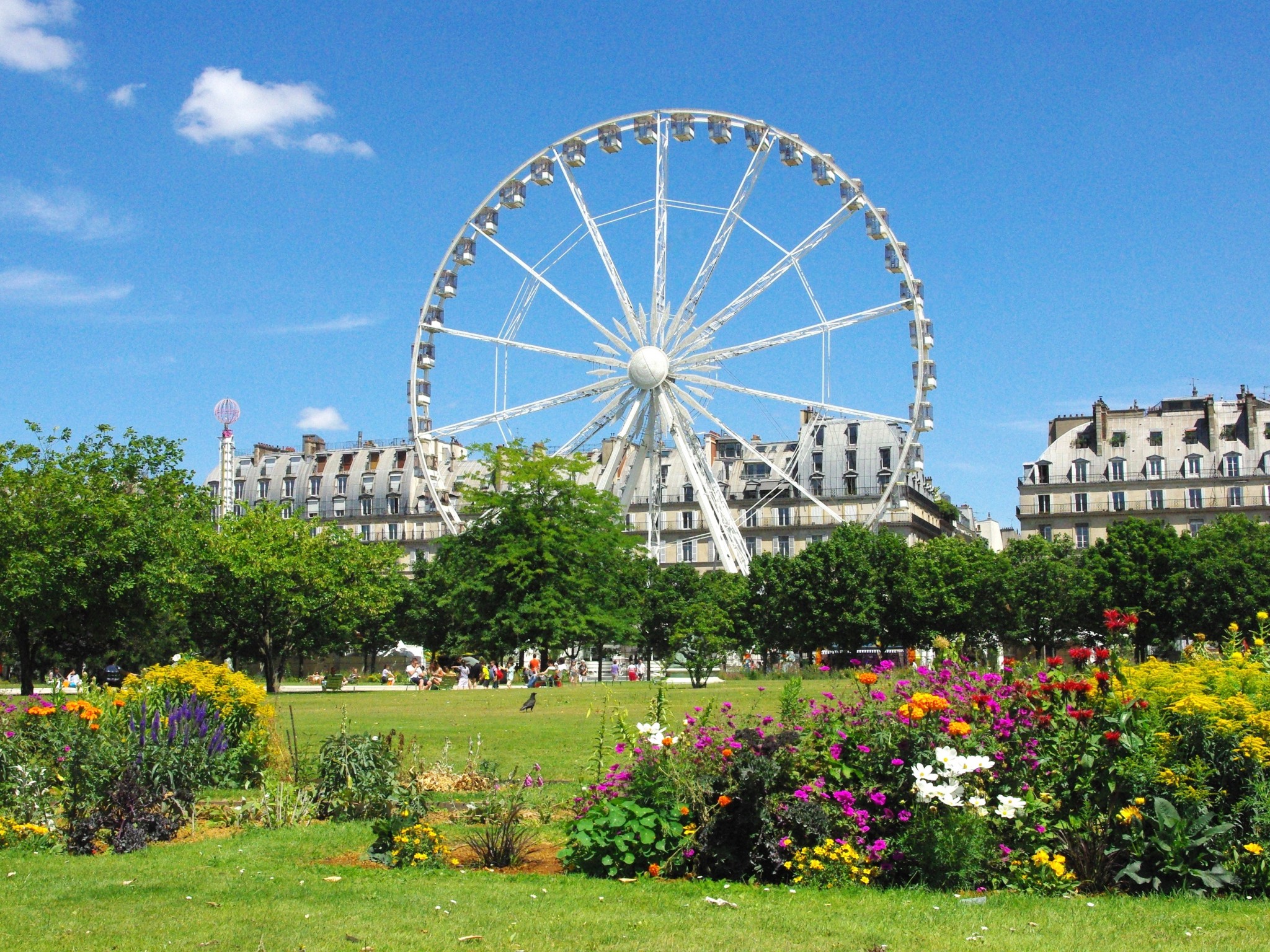
The parks and gardens of the 1st arrondissement are:
- Jardin des Tuileries and Jardin du Carrousel
- Jardin Nelson Mandela (between Les Halles and the Bourse du Commerce)
- Jardin du Palais Royal
- Jardin de l’Oratoire (which borders the Louvre on Rue de Rivoli)
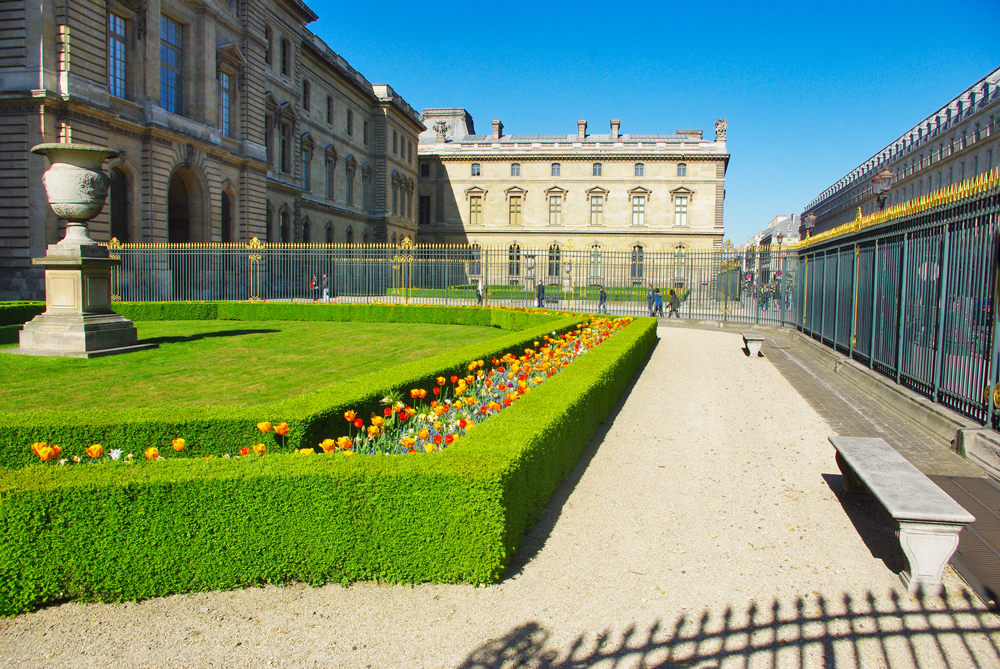
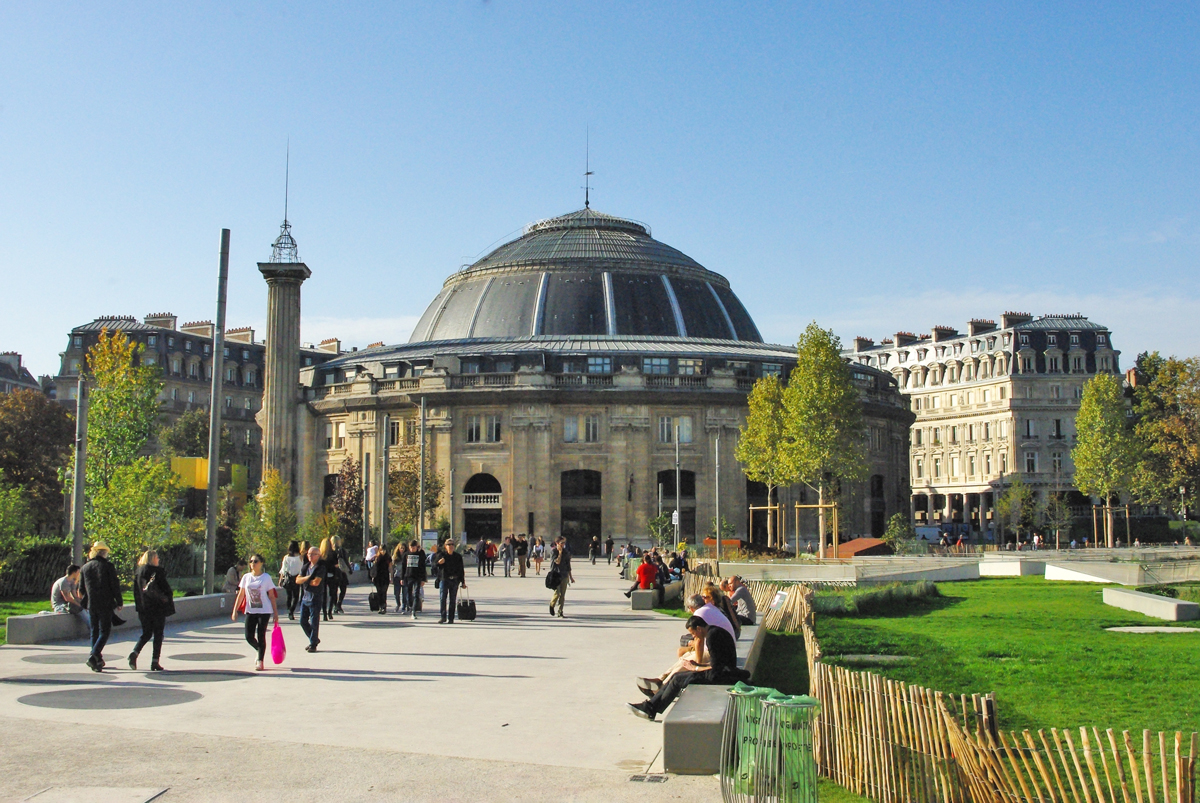
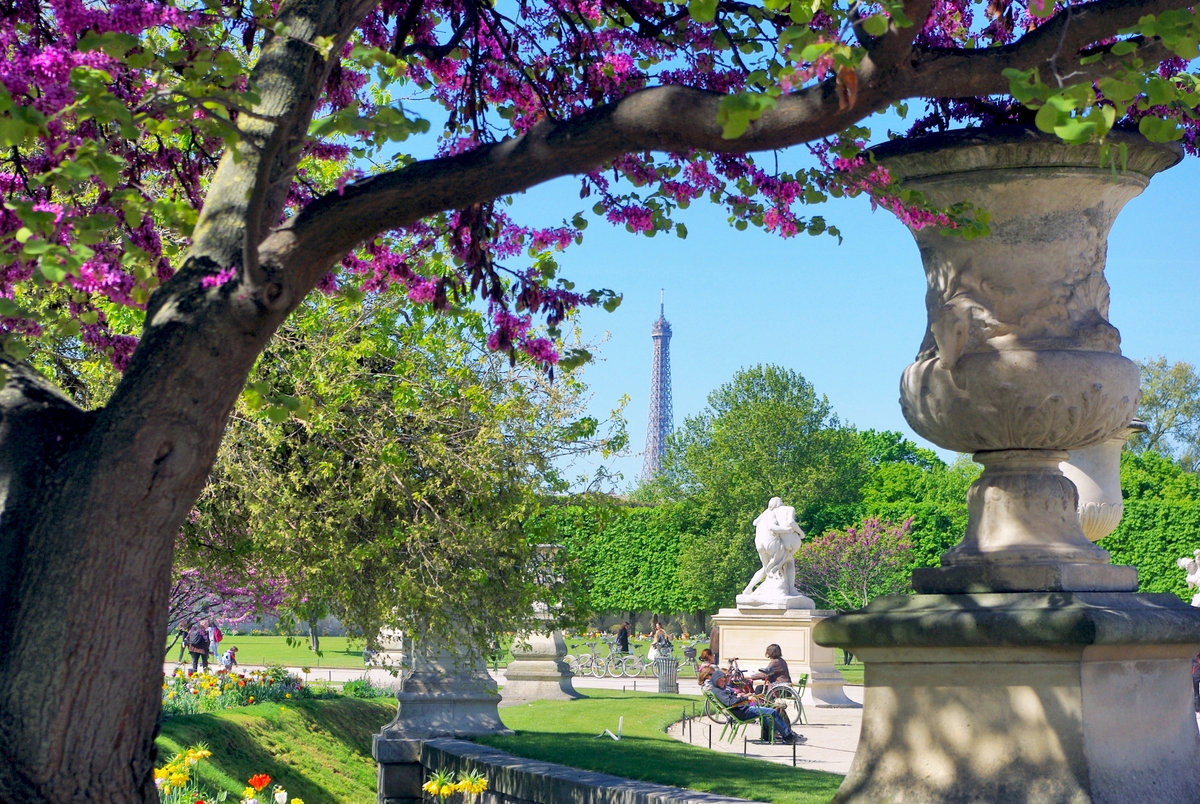
In addition, there are two small public gardens (Squares in French):
- Square du Vert-Galant (the western tip of the Ile de la Cité)
- Square de la Place Dauphine
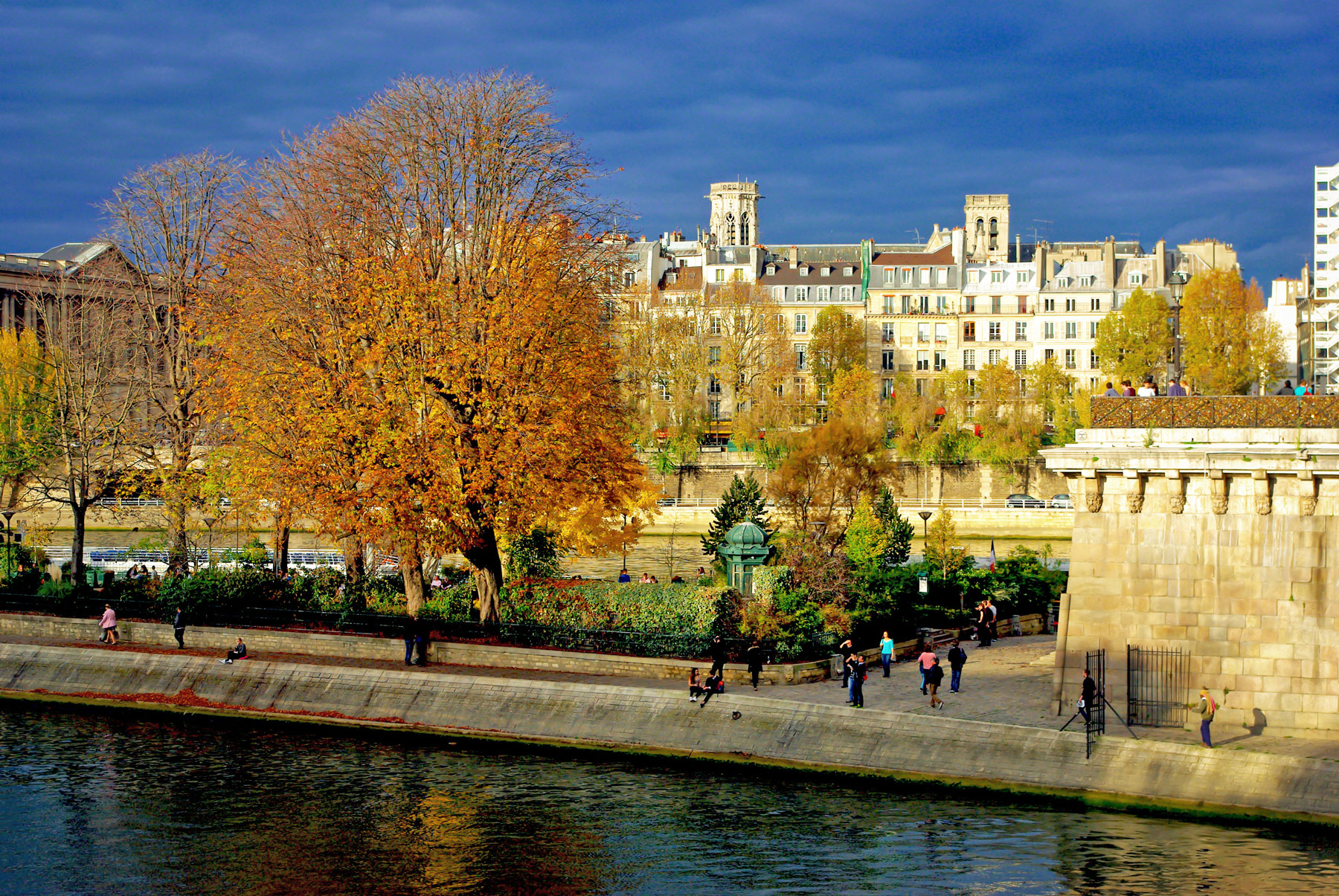
Other places of interest
Other landmarks in the 1st arrondissement are:
- the Arc de Triomphe du Carrousel
- the Palais Royal
- the Conciergerie >> Get your Priority Entrance eTickets <<
- the Banks of River Seine
- the Pont Neuf
- the Pont des Arts
- the Place Dauphine
- the Place Vendôme
- the Place du Châtelet
- the Samaritaine Department Store
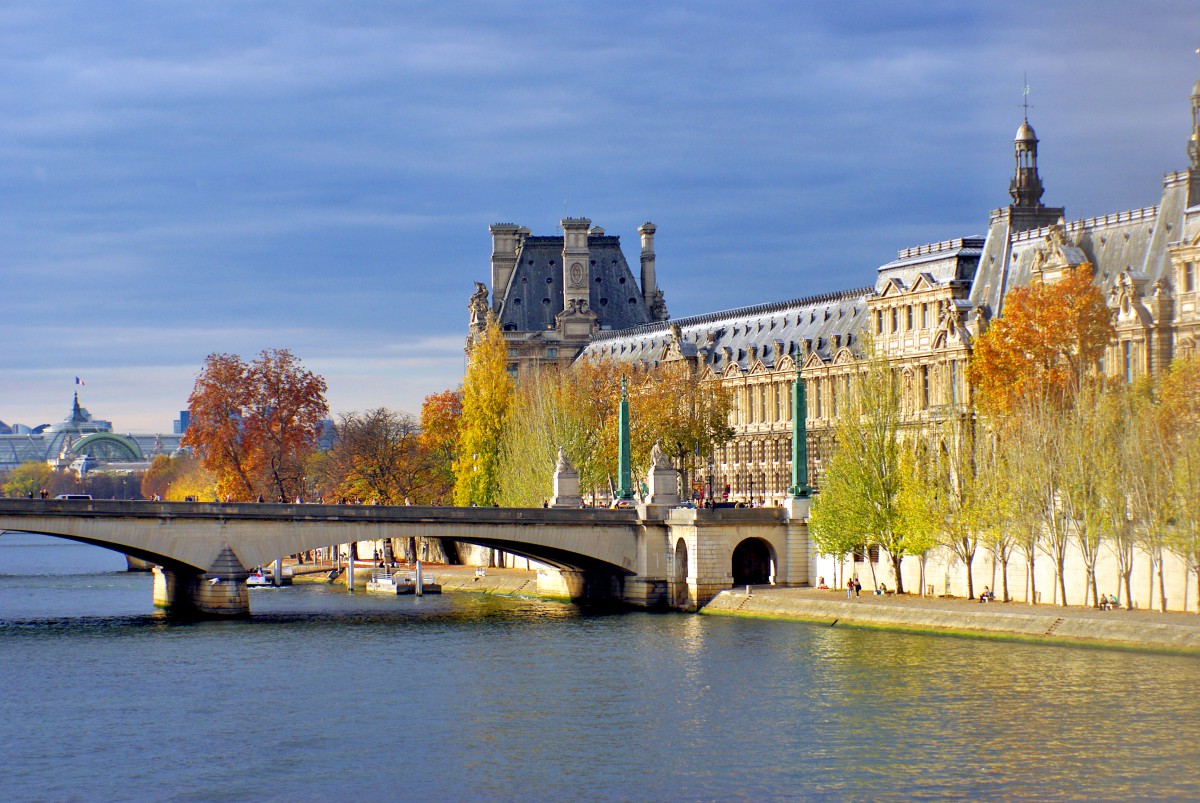
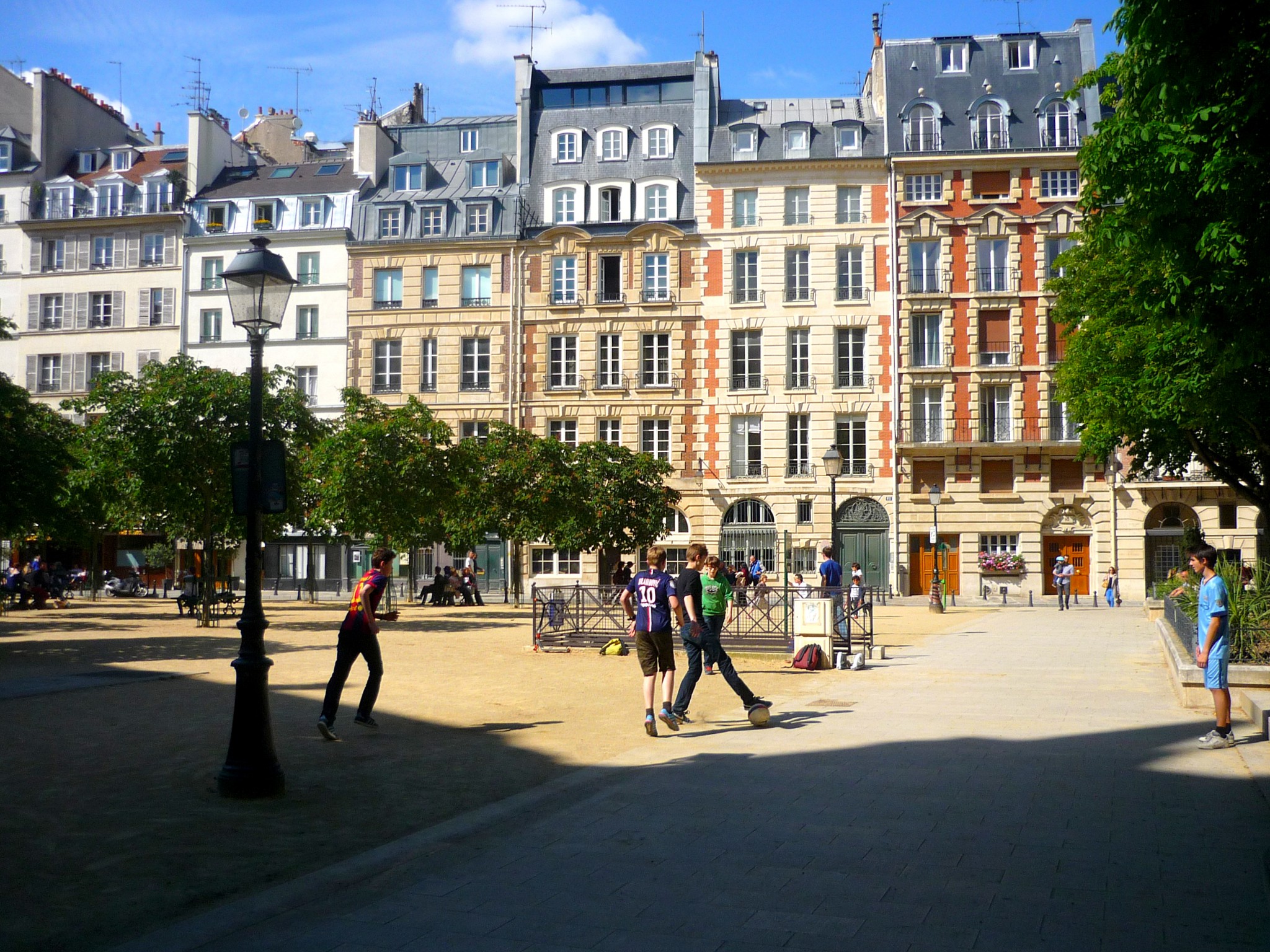
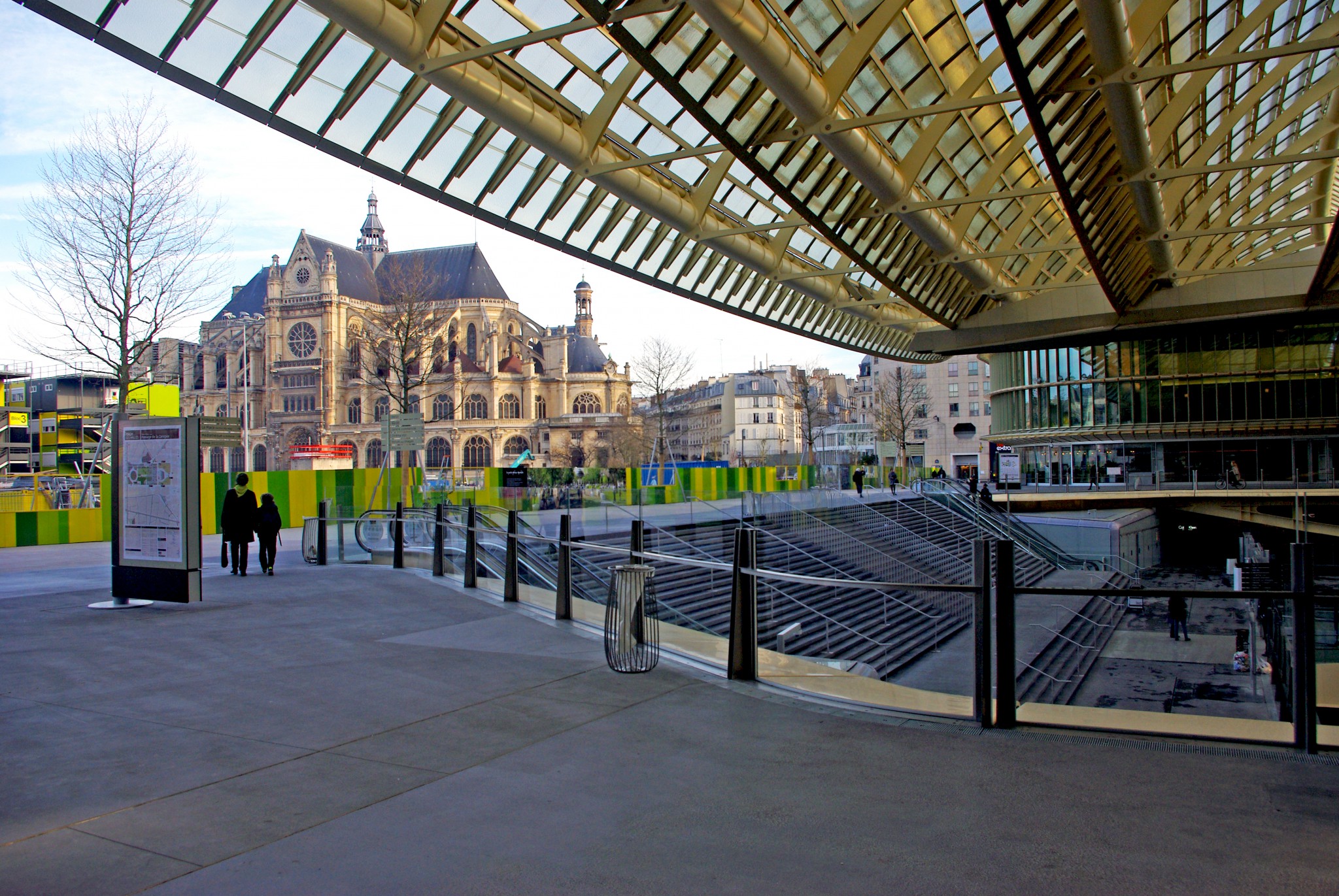
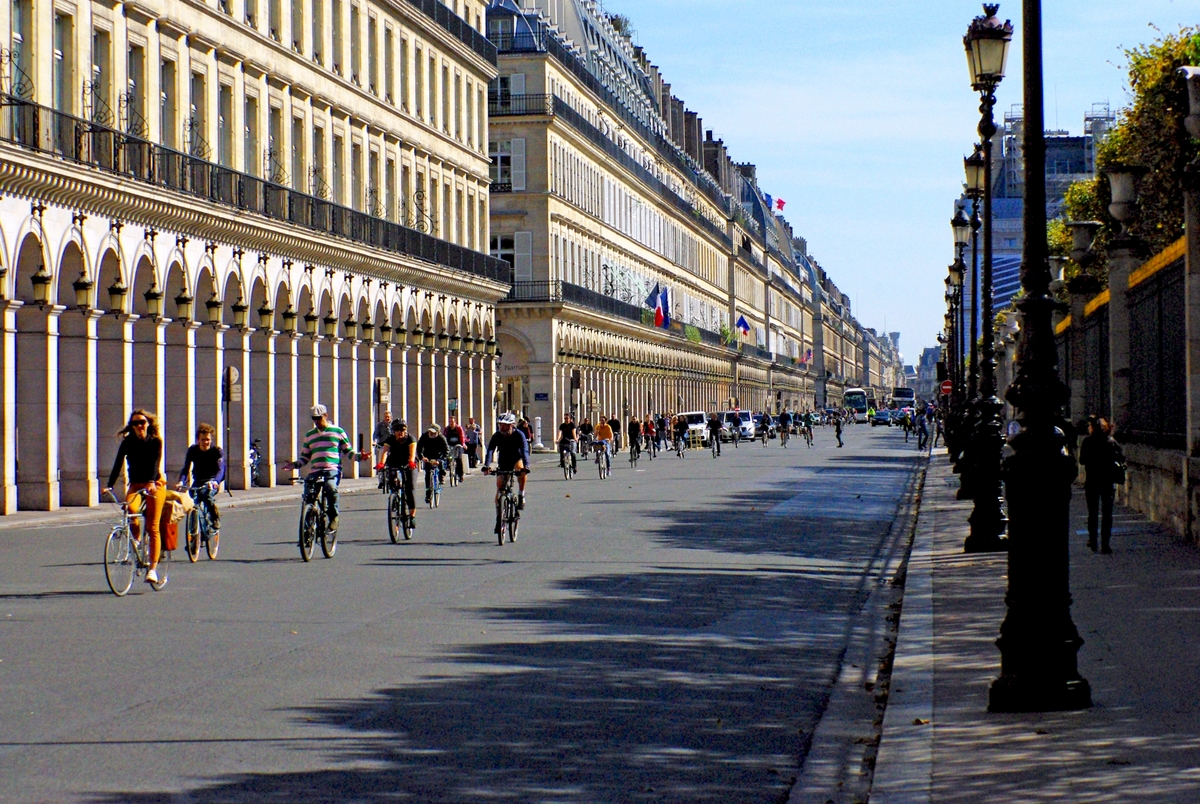
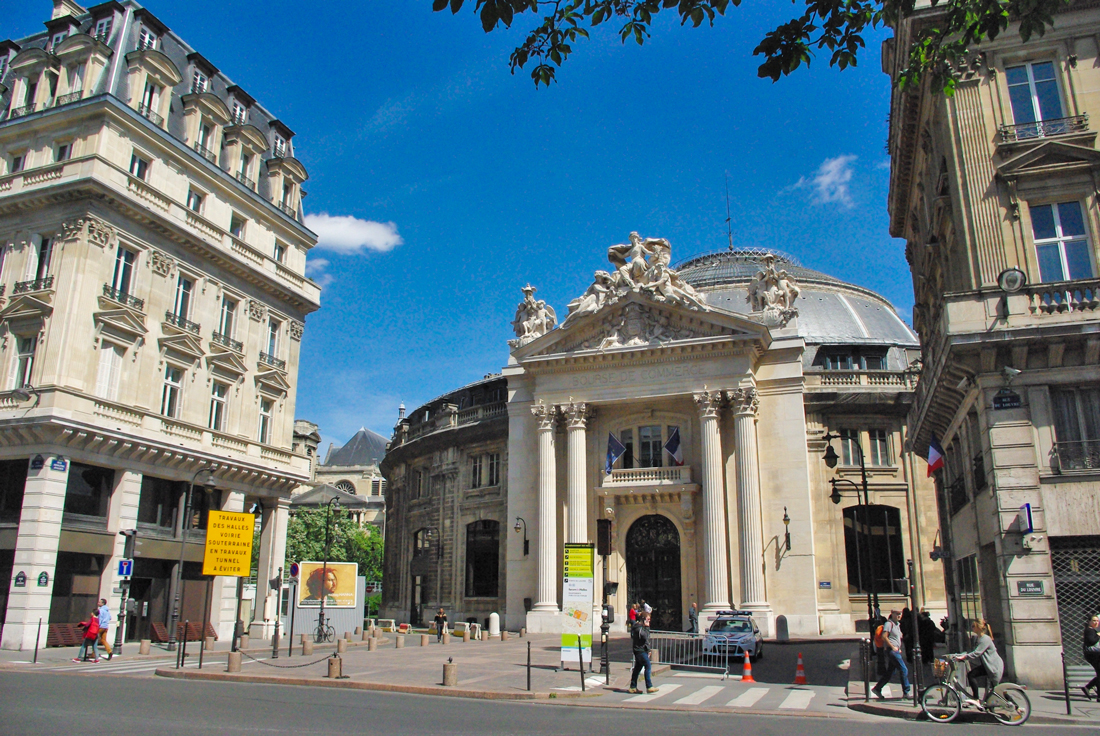
Ten secrets spots to see in the 1st arrondissement
This central arrondissement of Paris is famous for its monuments and landmarks. However, there are many secret places that few people (including Parisians) know about. Here is a small selection of 10 secret spots in the 1st arrondissement:
The bullet holes from the Liberation of Paris (Louvre)
In the Louvre, find the Porte Jaujard (Denon Wing), not far from the entrance to the Lions.
Observe the bronze statues of the Saharan lionesses that frame the porch of the Louvre school. Get close to them to notice the bullet holes (in particular on the abdomen of one lioness).
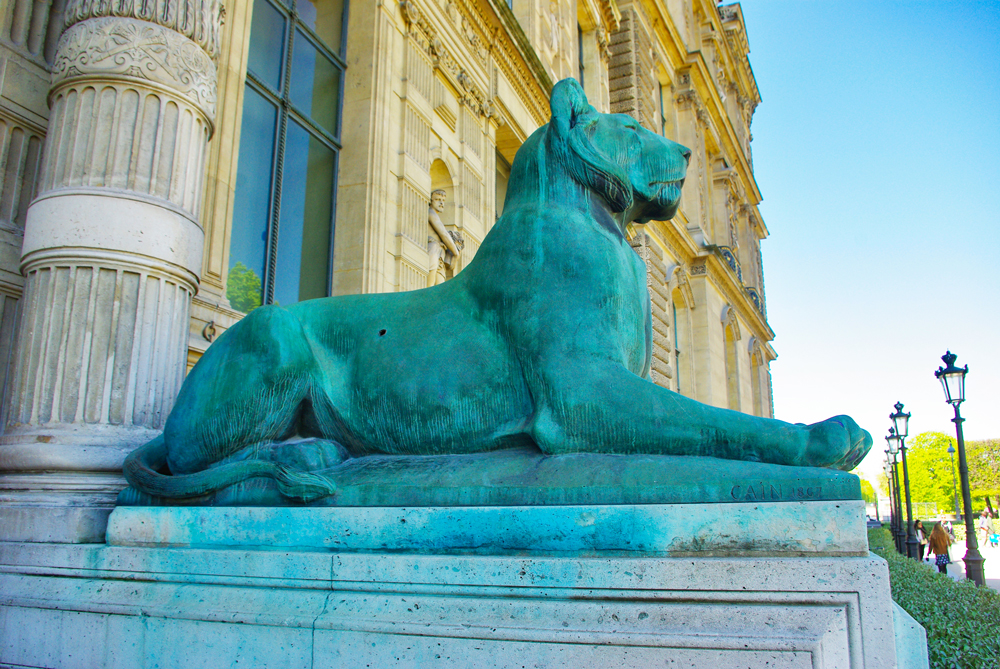
These bullet holes seem to date from August 1944, during the Liberation of Paris. Indeed, when the first tanks of General Leclerc’s armoured division approached Paris, Parisians set up barricades in the city. There was fighting in the streets, and bullets were flying. They hit facades, leaving traces still visible today, including in the Louvre.
The well and the cistern in the Cour Carrée (Louvre)
Look for two openings south of the Cour Carrée, protected by beautifully wrought iron gates. You’ll notice a round well and a squared cistern.

Both features are reminiscent of the medieval Louvre. Archaeologists discovered them during excavations in 1977. The openings in the existing paving of the courtyard have been maintained.

What were they used for? They ensured the water autonomy of the Louvre fortress, allowing it to withstand a siege.
The remains of the Tuileries Palace in the garden
The Tuileries Palace, built for Catherine de’ Medici, was begun by Philibert de l’Orme in 1564. Completed by Louis Le Vau during the reign of Louis XIV, the palace disappeared after a fire during the Commune in 1871. The public authorities hesitated to restore it for ten years but eventually demolished it in 1882.
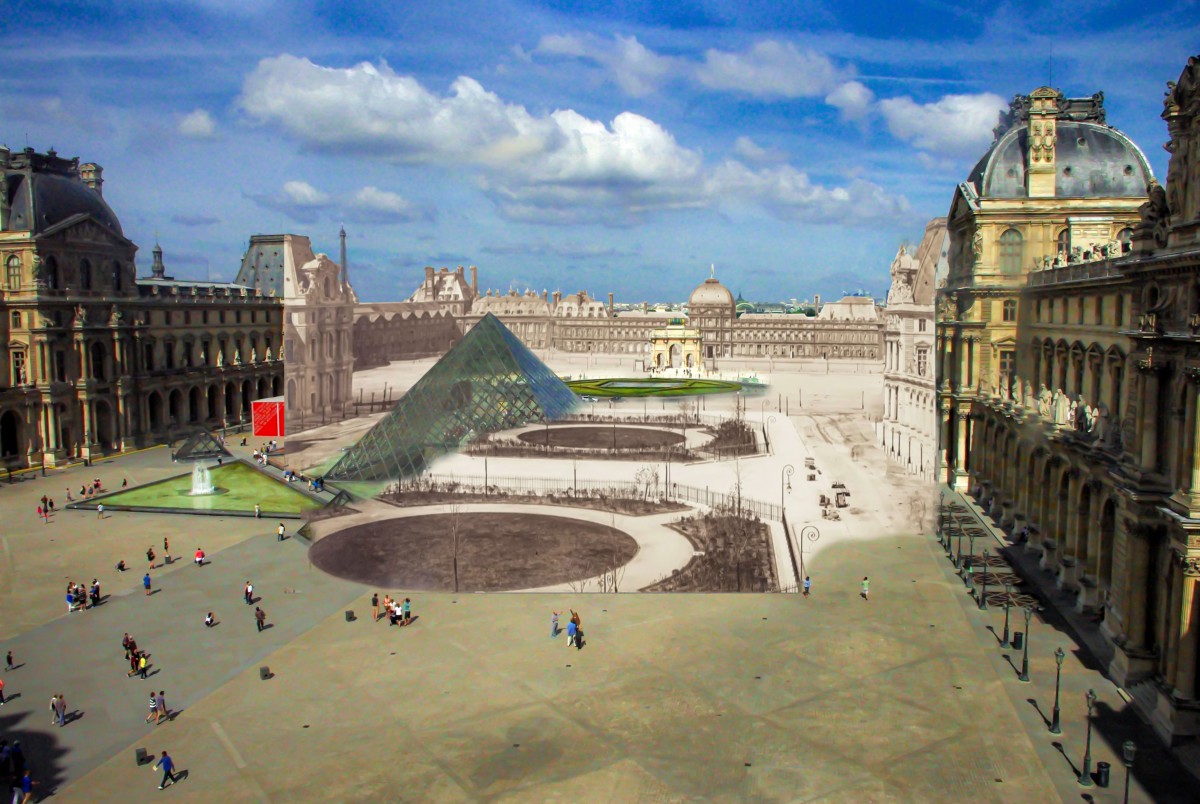
However, the French State saved some architectural elements, including two arcades that faced the garden. These were dismantled and rebuilt in the Tuileries garden, at the foot of the Terrasse du Jeu de Paume. One was by Philibert de l’Orme, the other by Jean Bullant, his successor on the Tuileries Palace site. As the arcades deteriorated, they were removed in 1993.
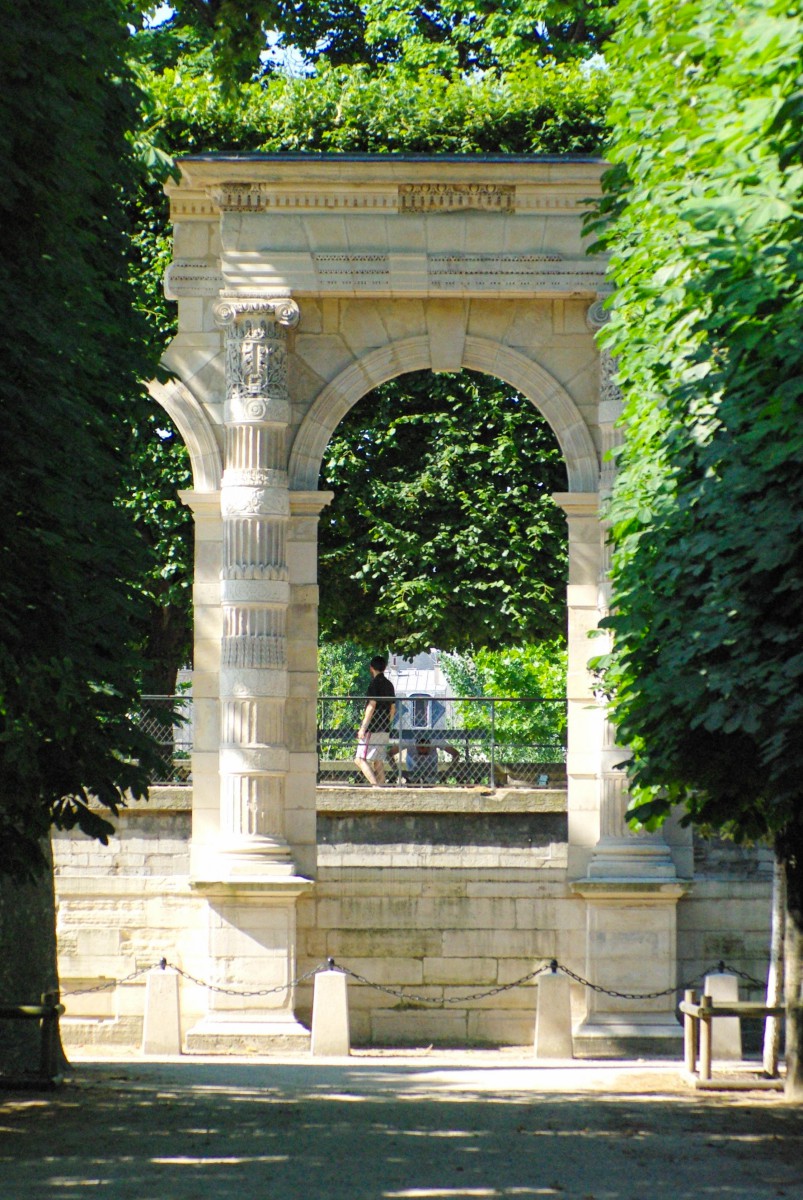
The arcade on the edge of the terrace along the Seine is by Philibert de l’Orme. Not all the stones are original. The less damaged ones are recent reconstructions. In the vicinity of this arcade, there are still many stones from the demolished palace. They are sometimes visible, sometimes covered with tarps. Find out more about the Tuileries Palace.
Fountain of the Croix-du-Trahoir
Today the intersection of rue Saint-Honoré and rue de l’Arbre-Sec is part of one of the nicest parts of Paris. At the crossroads is the little fountain of Croix-du-Trahoir.
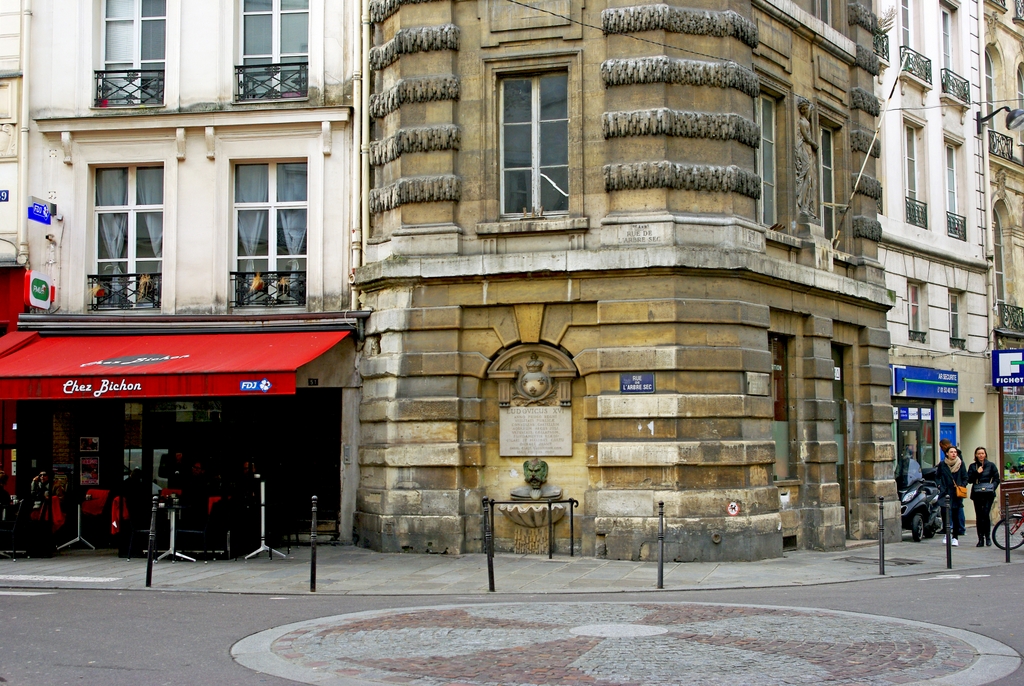
It is a witness to public executions and other atrocities committed from the Middle Ages until the 18th century. Indeed, counterfeiters were boiled on that spot, Lutherans were burnt at stake, and unworthy servants’ ears were cut off. Find out more about the Croix-du-Trahoir…
The first skyscraper in Paris from the 18th century
Head to 48 Rue de Valois, in the vicinity of the Palais-Royal, to discover Paris’ first skyscraper! Entrepreneur François Guiraud de Talairac built it in 1781, under the reign of Louis XVI (1754-1793).
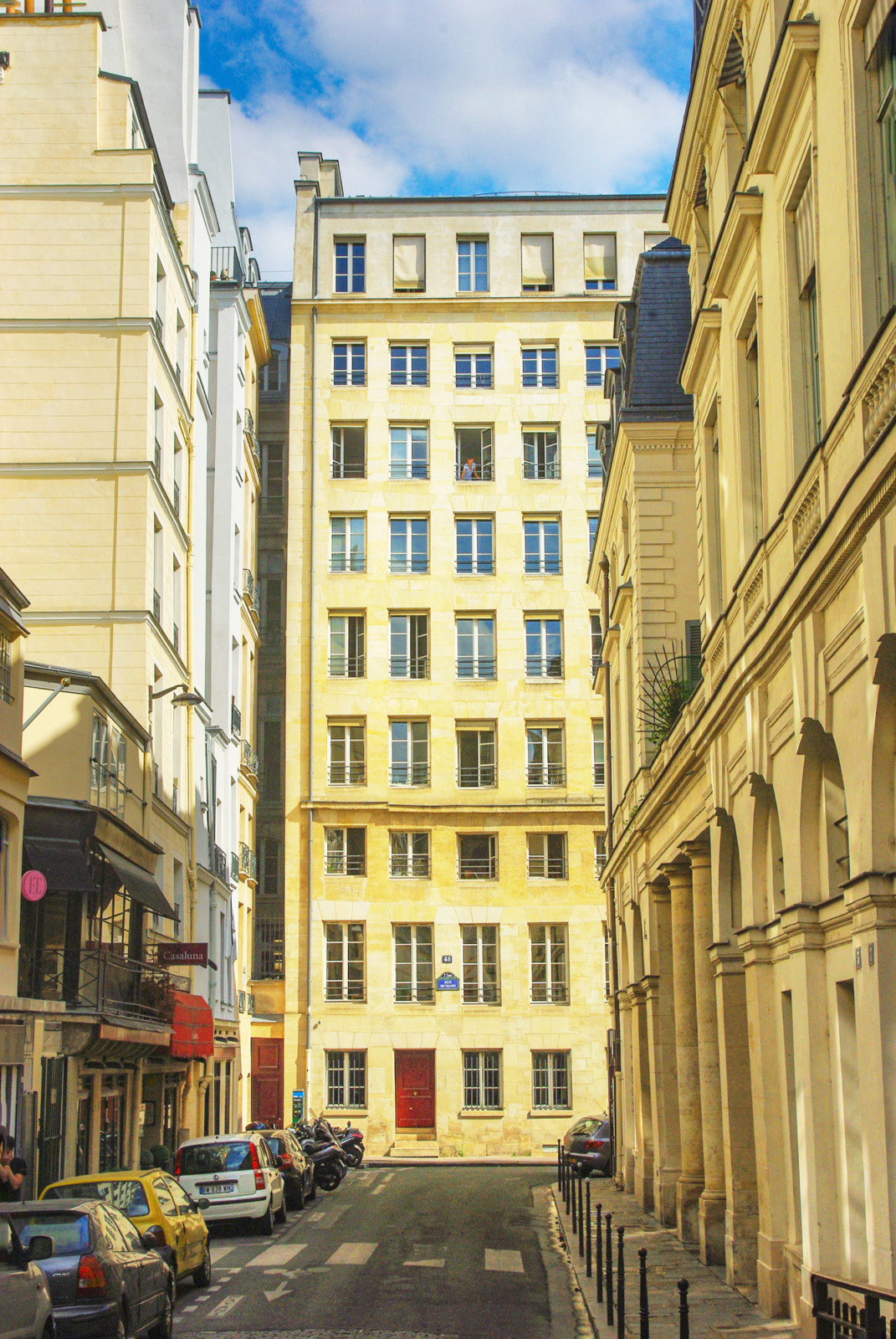
The building has a total of nine levels under the eaves. It was the tallest residential building in Paris at the time (and for many years to come). Find out more on the blog…
The Elephant head of the Rue de la Cossonnerie
How many people passing by the busy street of Rue de la Cossonnerie actually know there is an elephant head near Les Halles, right here, in central Paris?
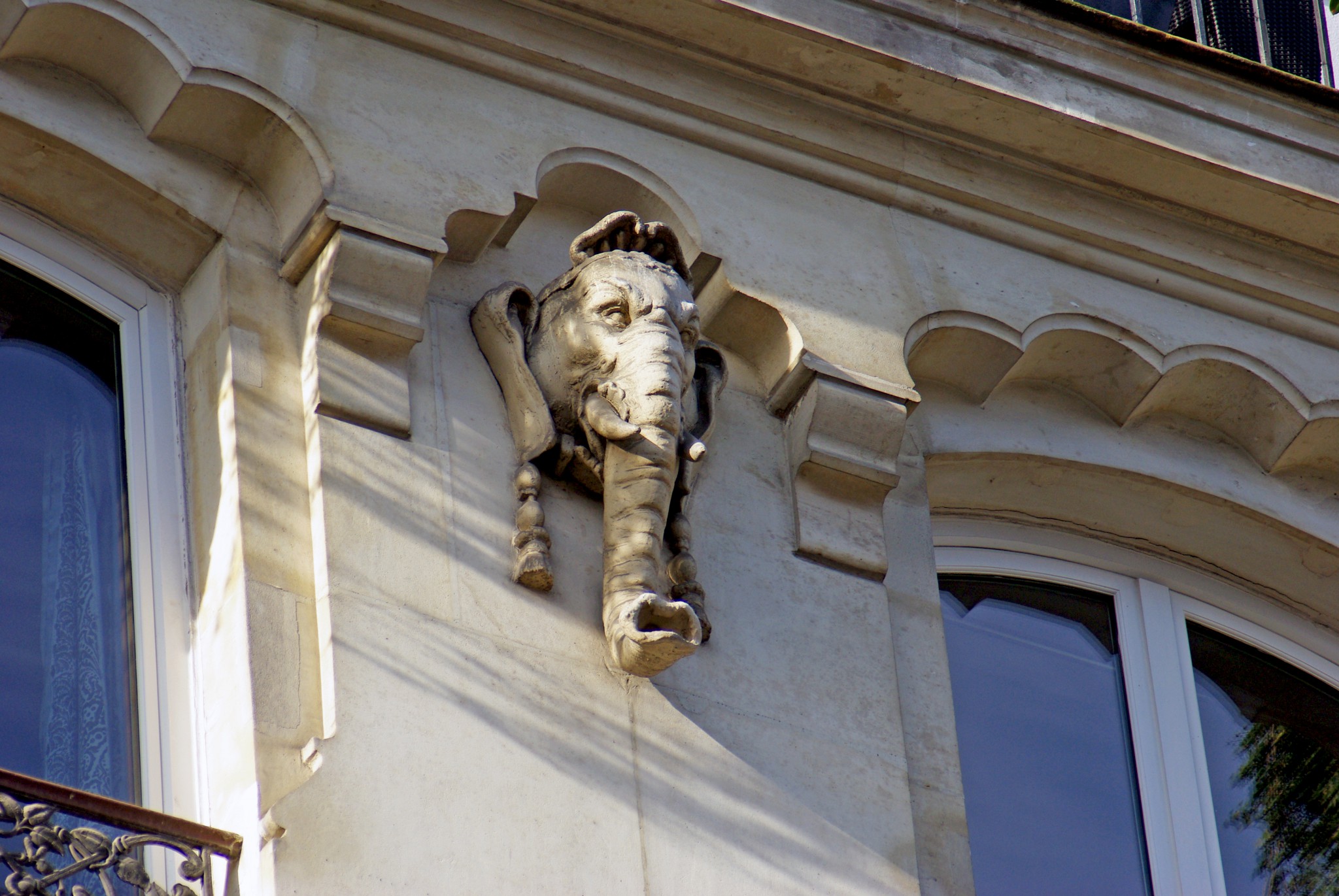
Lift up your eyes at number 3, and you will discover a very beautiful elephant head which is arguable of Indian Islamic style. Read more…
The former Texas Embassy in Paris
What is commonly referred to as a Texas Embassy in Paris was, in fact, a Legation. This meant a diplomatic mission managed by someone with a lower-ranking official than an ambassador.

The exact site of the Texas Legation in Paris is at 1 Place Vendôme in the 1st arrondissement. Known as Hôtel Bataille de Francès, the mansion dating from 1705 has a carving on its wall that indicates where the Legation used to be. Find out more on the blog…
The Colonne Médicis
A curious tall column stands in Rue de Viarmes, next to the Bourse de Commerce. It is one of the most mysterious monuments in Paris. The Colonne Médicis is, in fact, the only vestige of the hotel built in 1572 by Catherine de’ Medici. The queen had built this 31-metre tower for her astrologer, Casimo Ruggieri, who greatly influenced her.

The column narrowly escaped destruction in 1750 when the City of Paris acquired it. Later, the municipality added a fountain and a sundial to the monument.
The first public clock of Paris
A beautiful gilded Conciergerie clock is hanging on the Clock Tower of the Conciergerie, at the junction of Quai de l’Horloge and Boulevard du Palais.
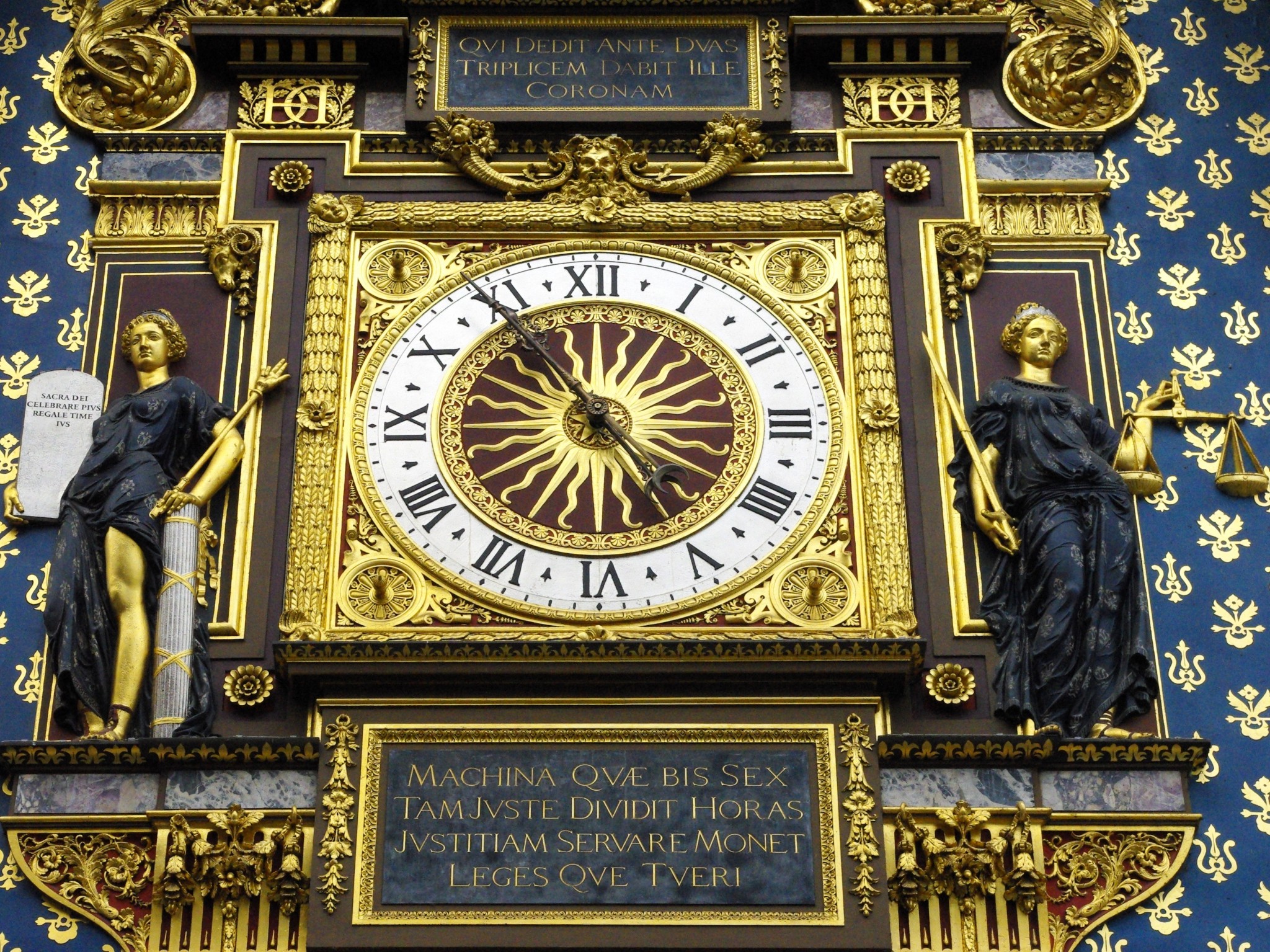
In fact, the Conciergerie clock is France’s first public clock and a real piece of art. It dates back to the mid-14th century and was recently restored to its former glory. Find out more…
The Fontaine Molière
The present-day square Place Mireille is the location of Molière’s death on 21 February 1673. In fact, Molière is said to have died at ten o’clock in the evening at 40 Rue de Richelieu.
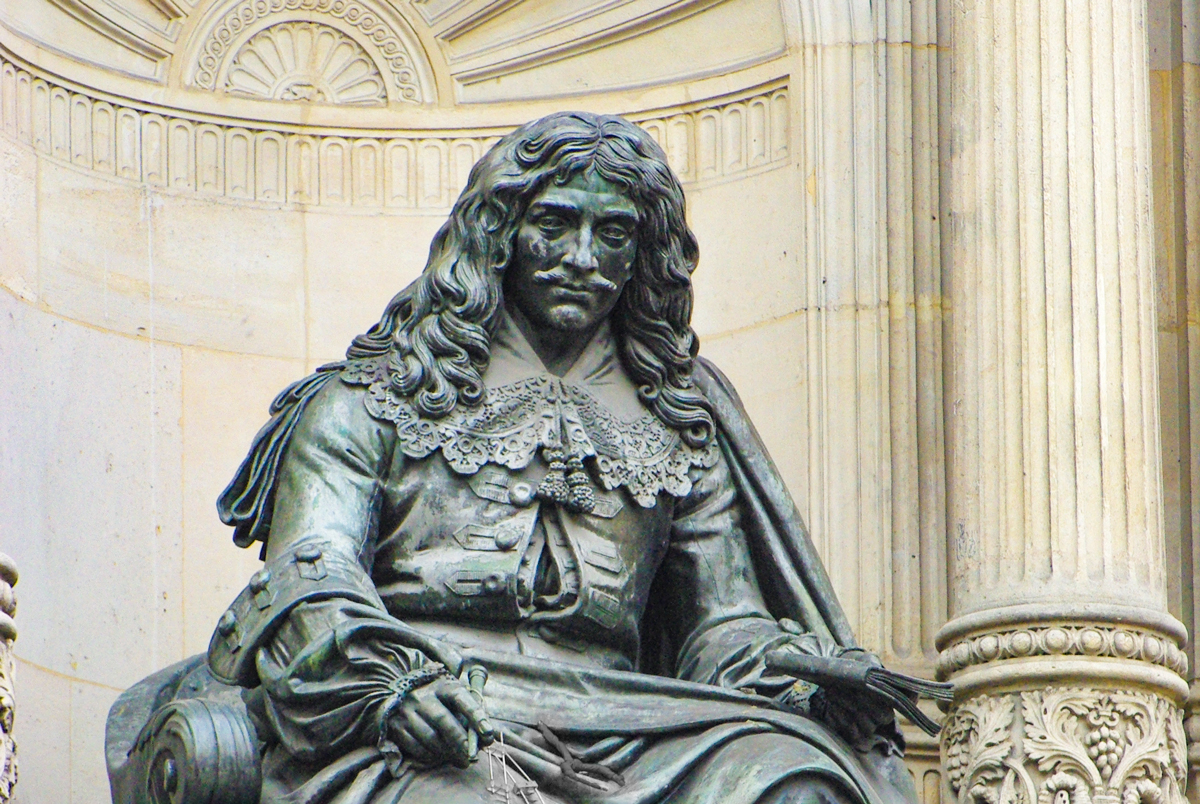
Today the square is home to a monumental fountain. The central bronze statue, enthroned under a portico with an imposing pediment, represents Molière seated. It is a creation of the sculptor Bernard-Gabriel Seurre (1795-1867) and was cast by Eck and Durand. Find out more…
Pin it for later!
Finally, pin this pic on Pinterest or share this article on Facebook and Twitter if you enjoyed the reading!
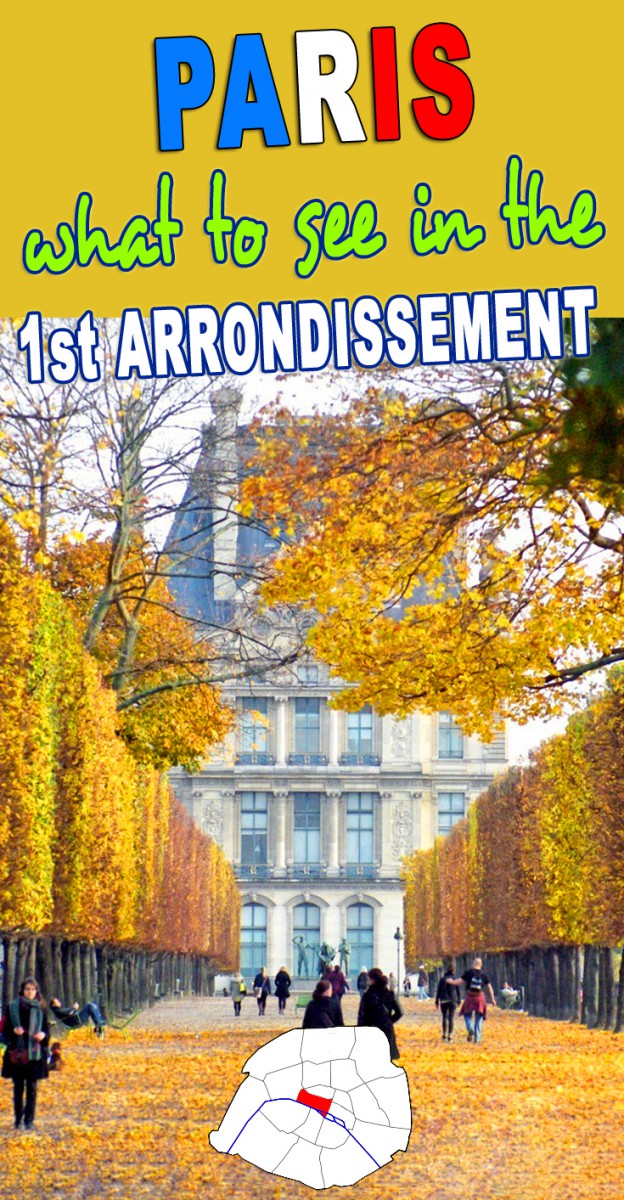

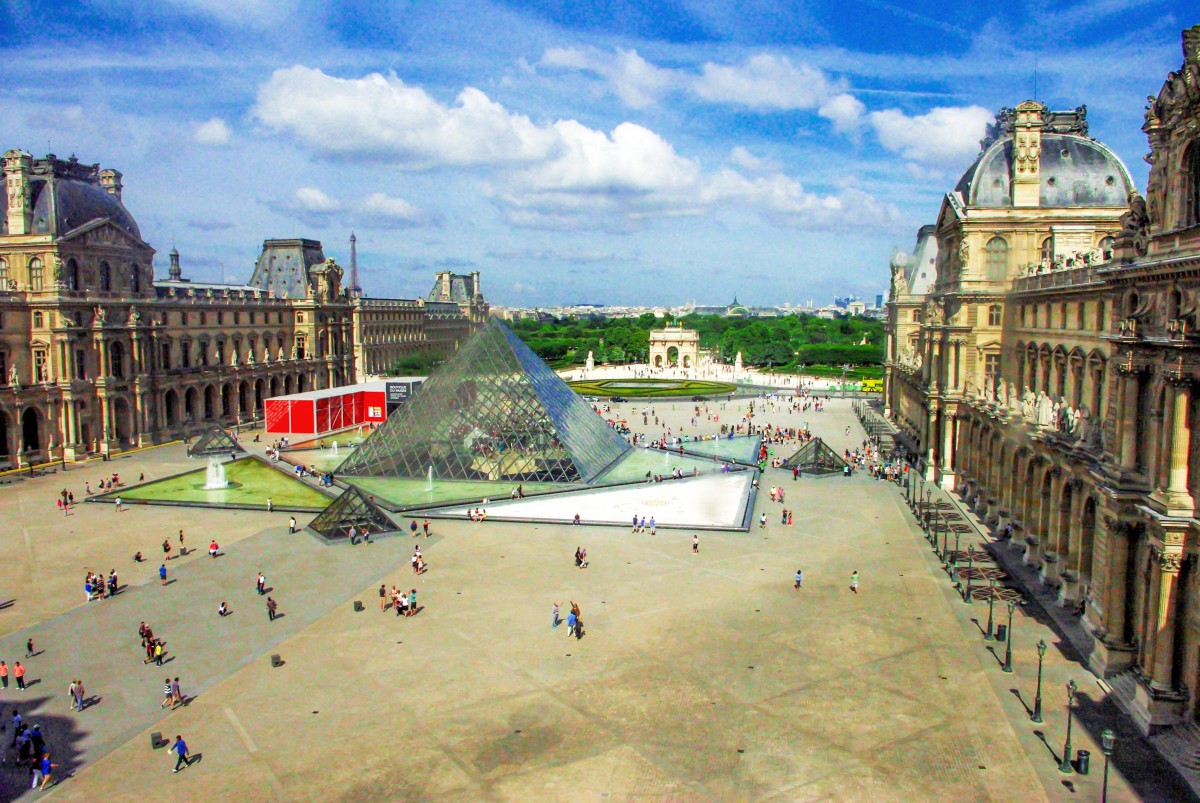


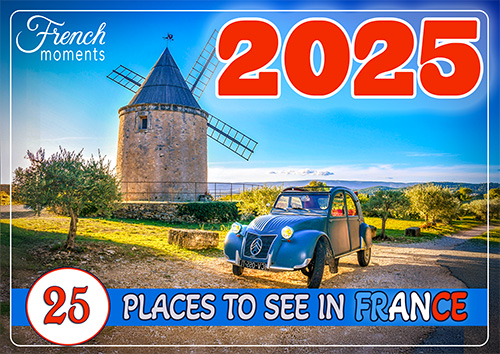
Enjoyed the newest article, especially secret spots of the 1e. Having seen most of them, it does the flaneur’s heart good to read about them when I’m not there. FYI: if you like Middle Eastern food with a nod to Lebanese fare, chk out Le Festival on Richelieu a stone’s throw from the Molière fountain🤙🏽.
Thank you Greg for the tip about the restaurant 😉